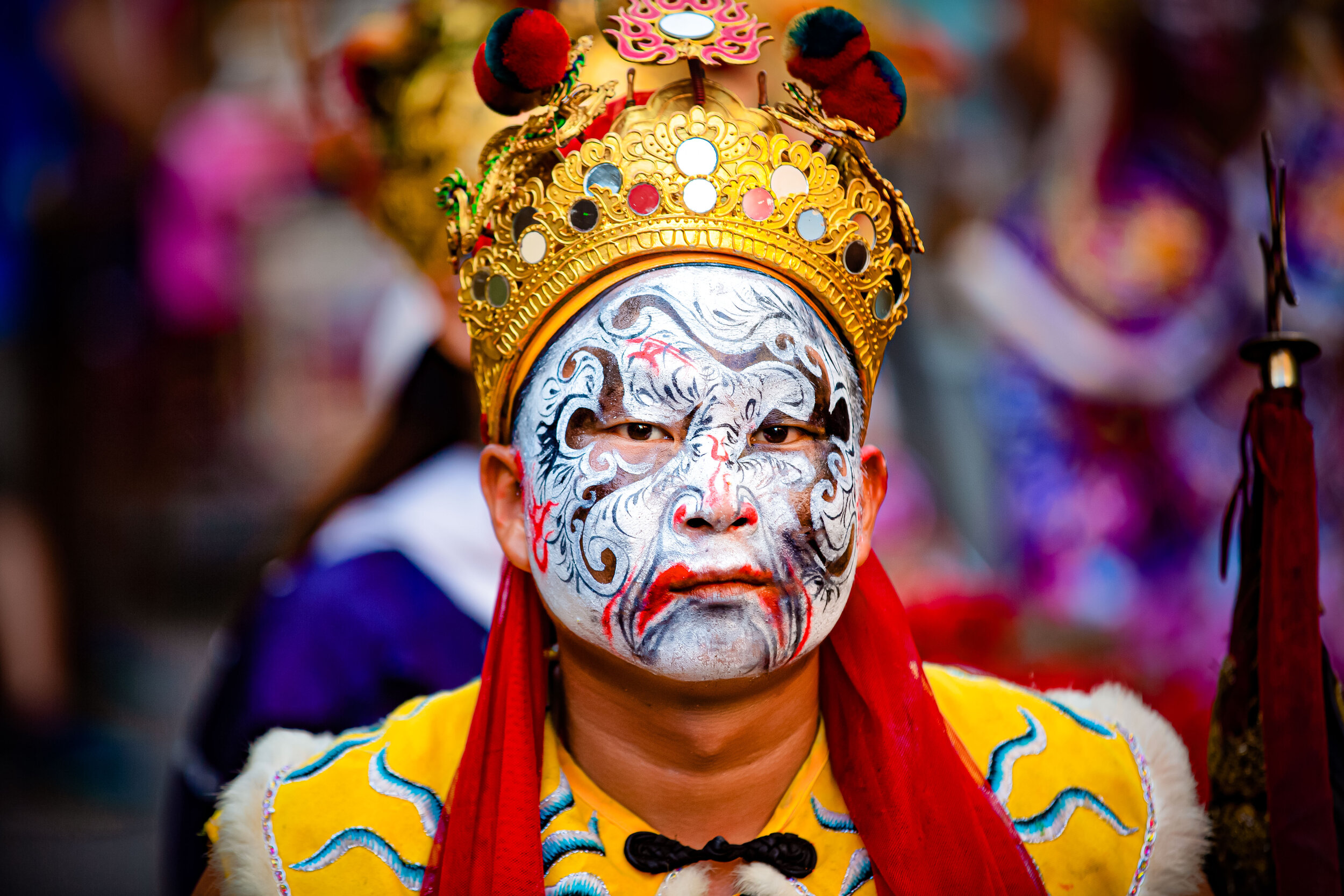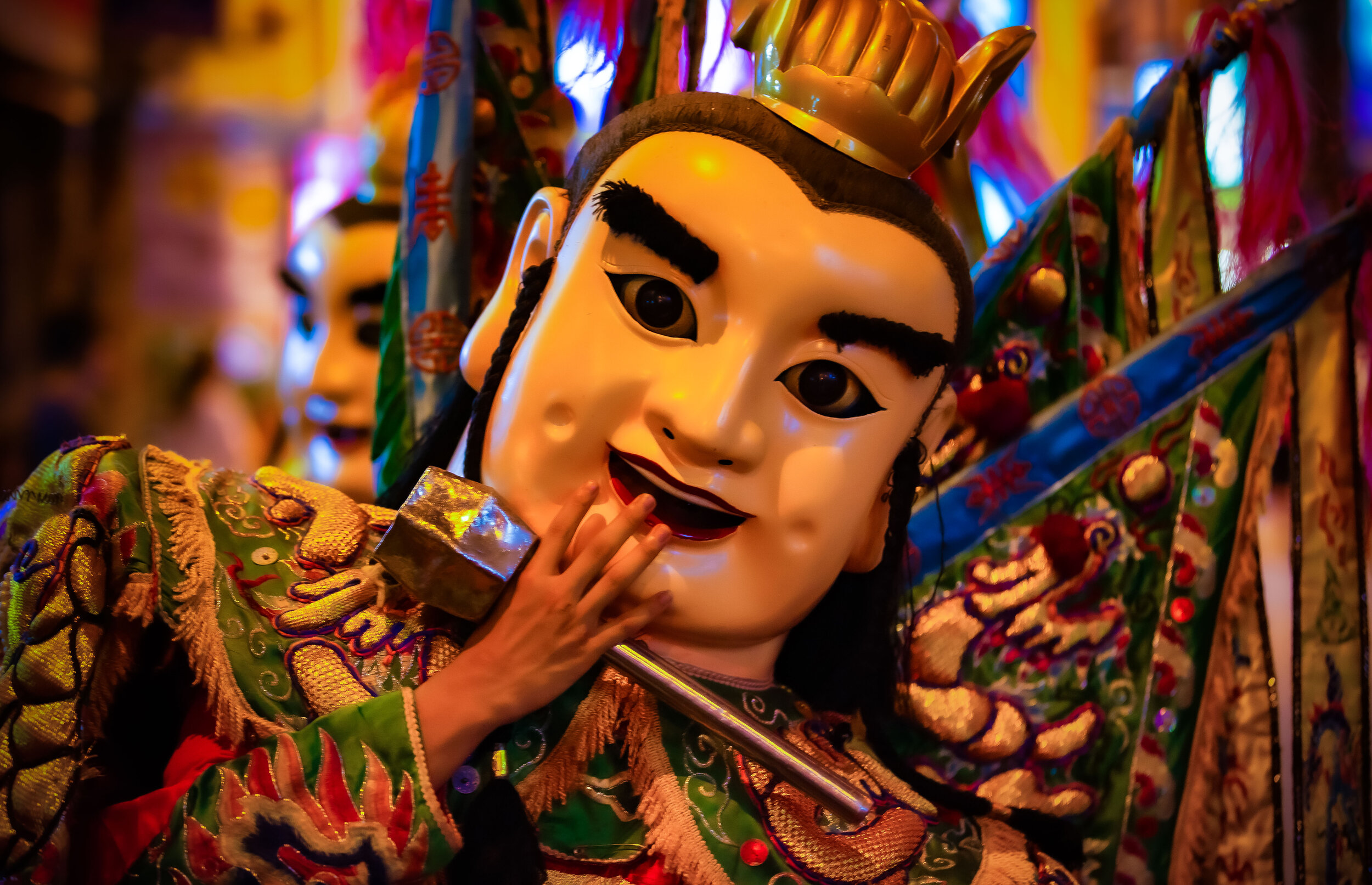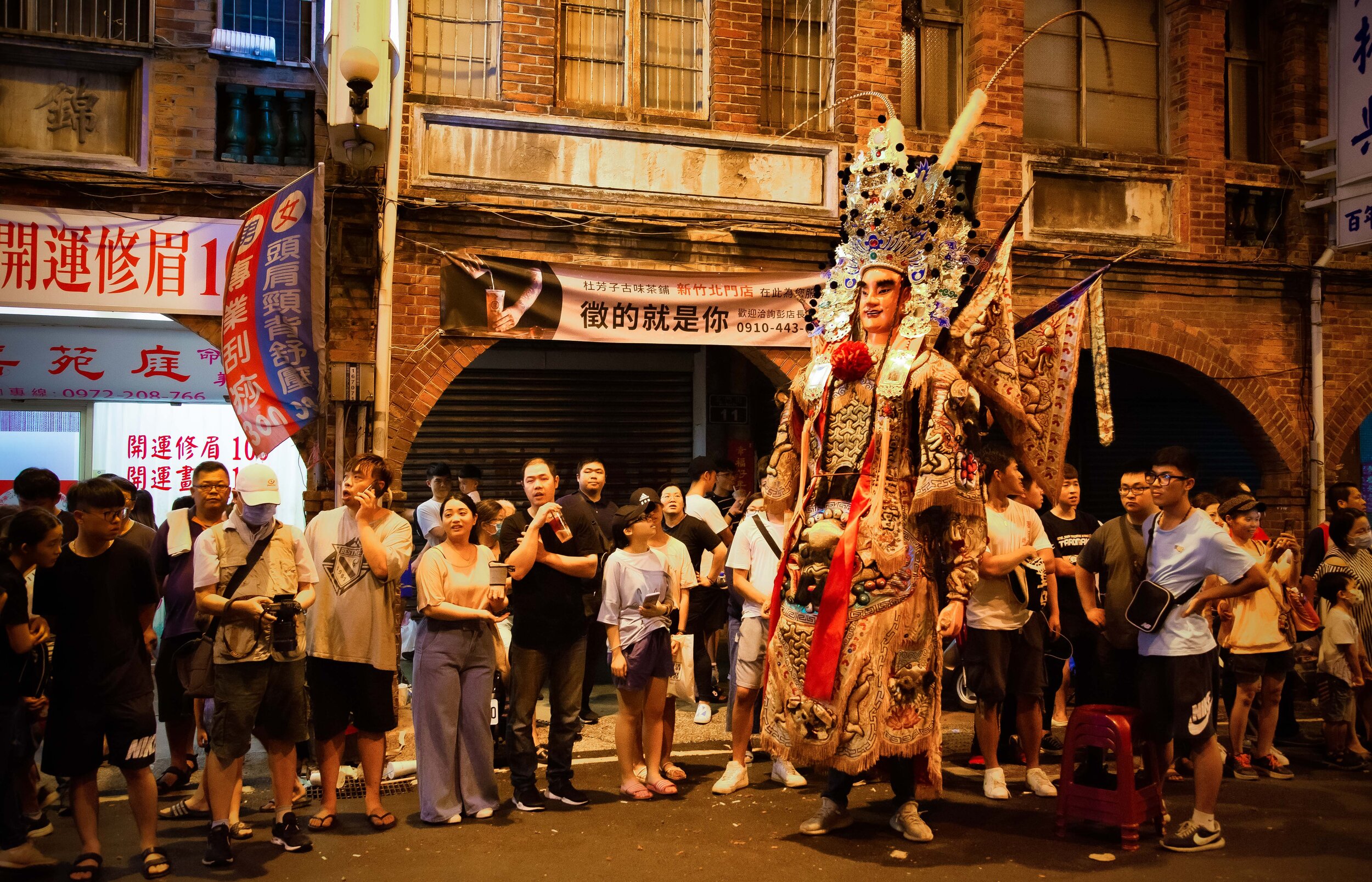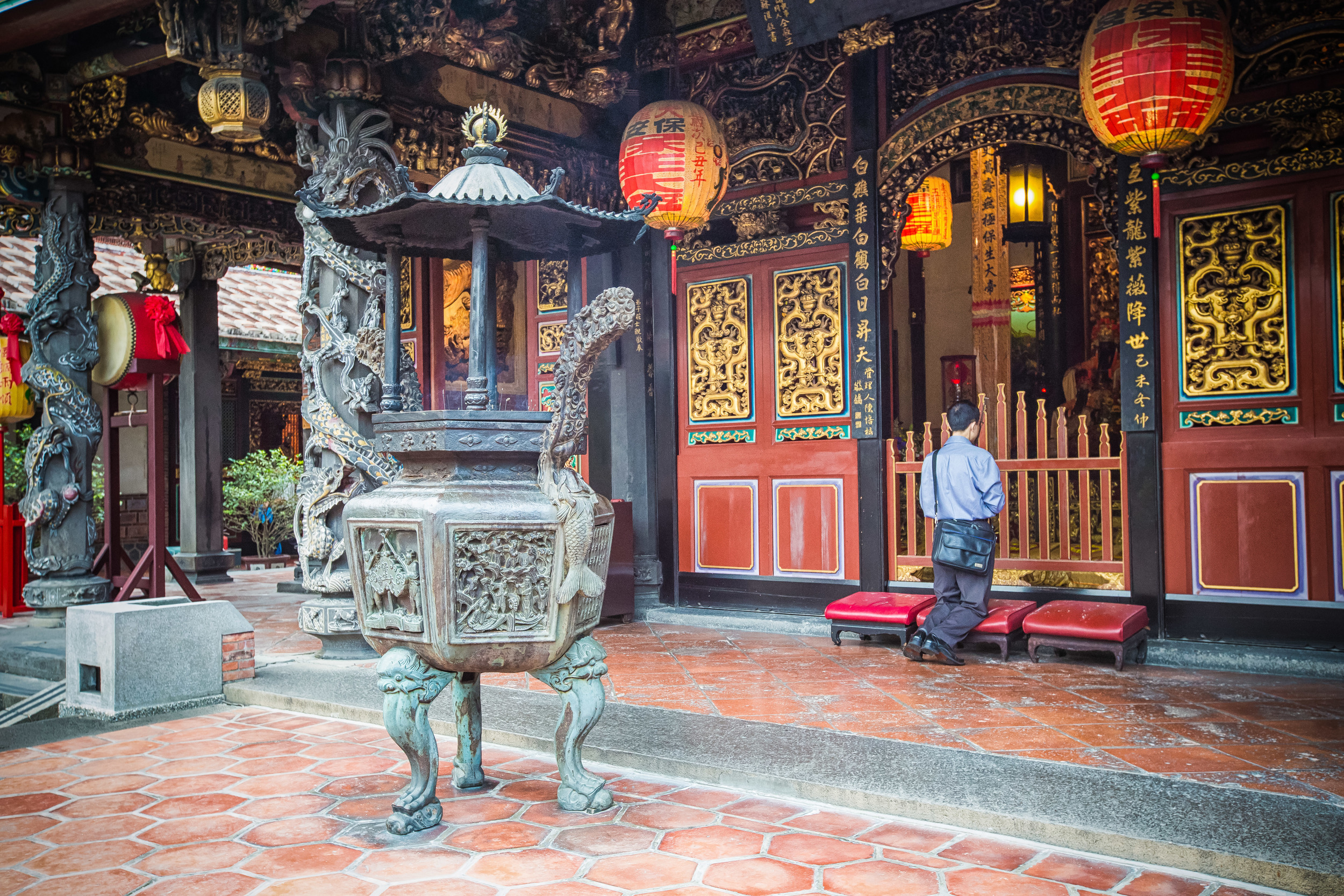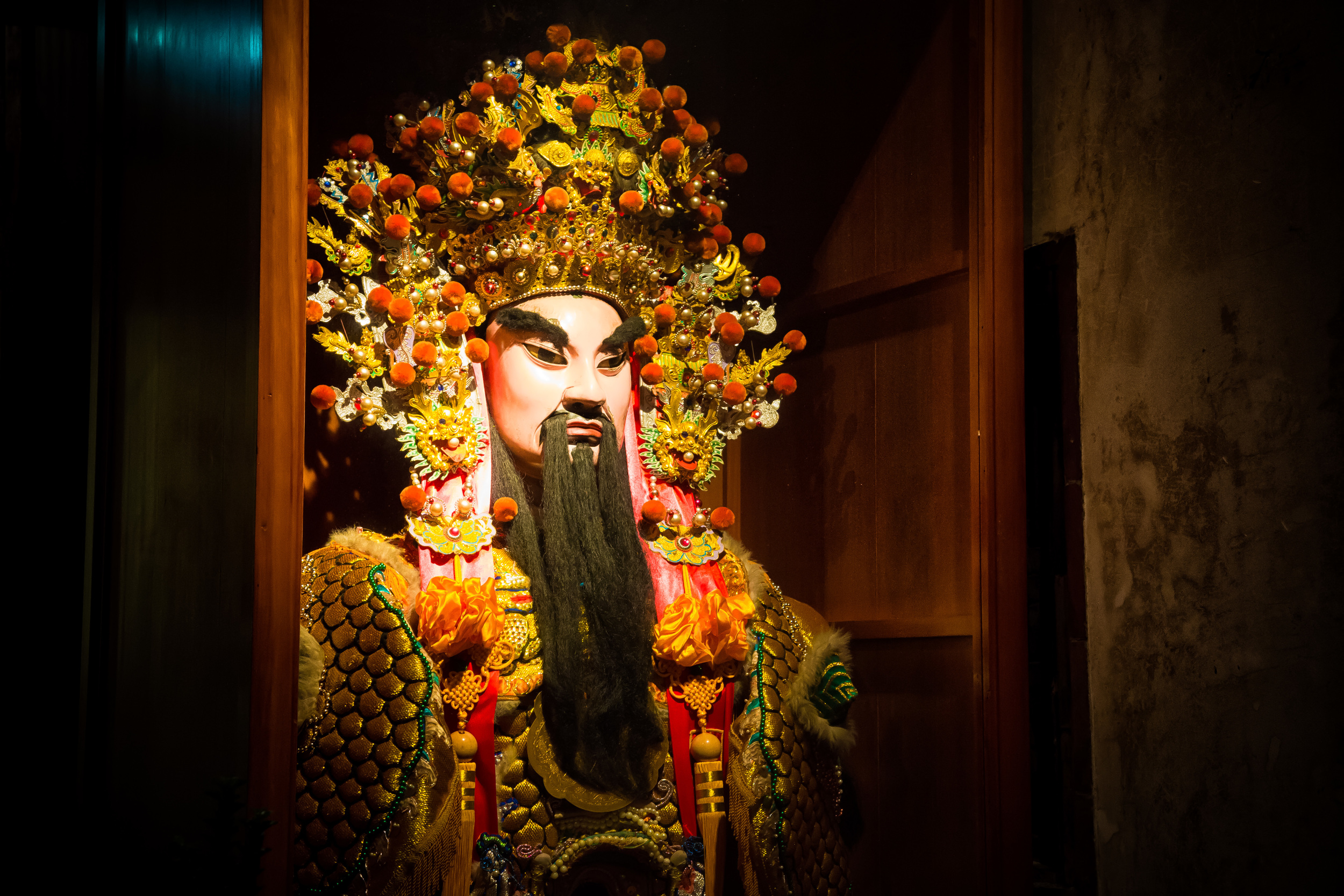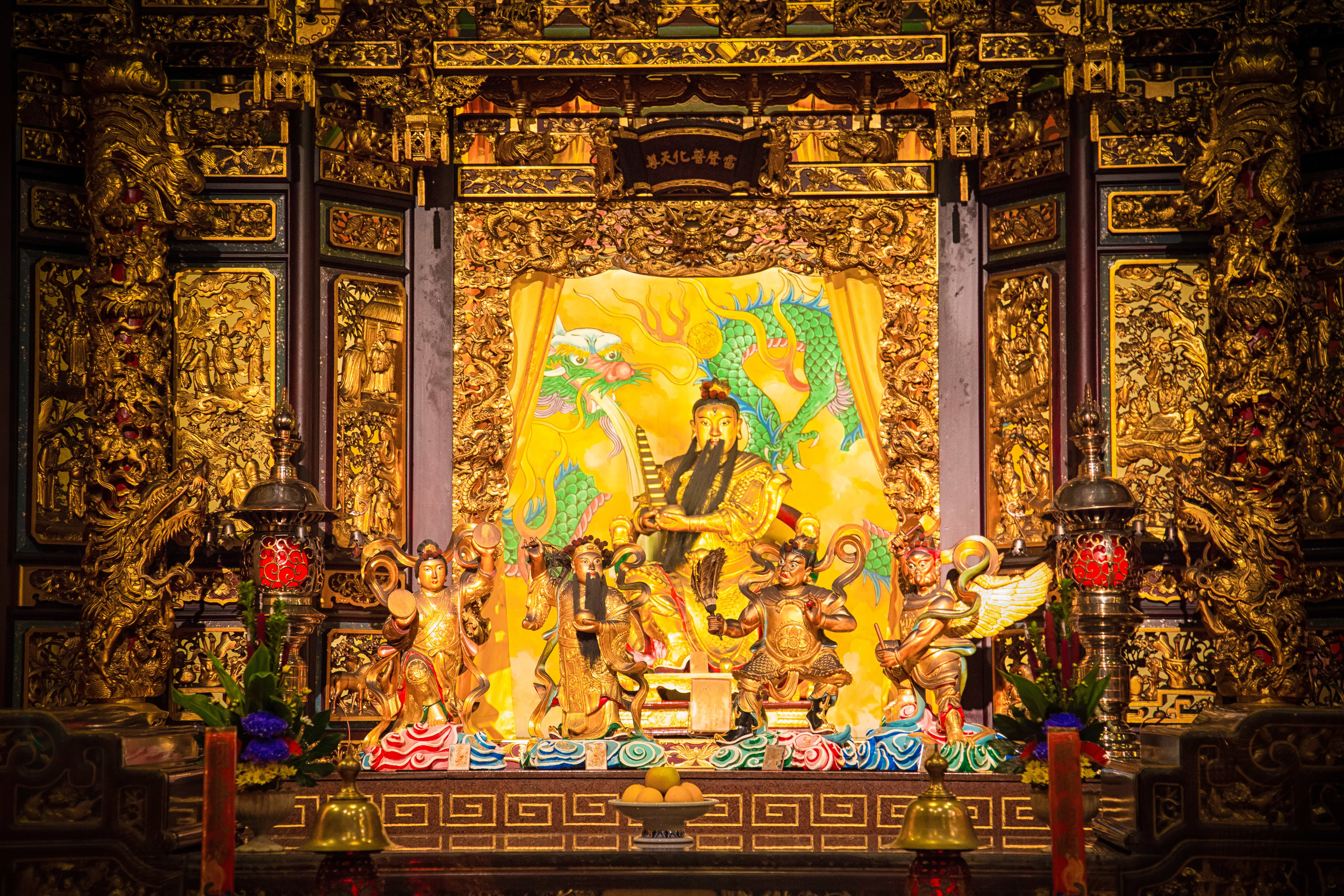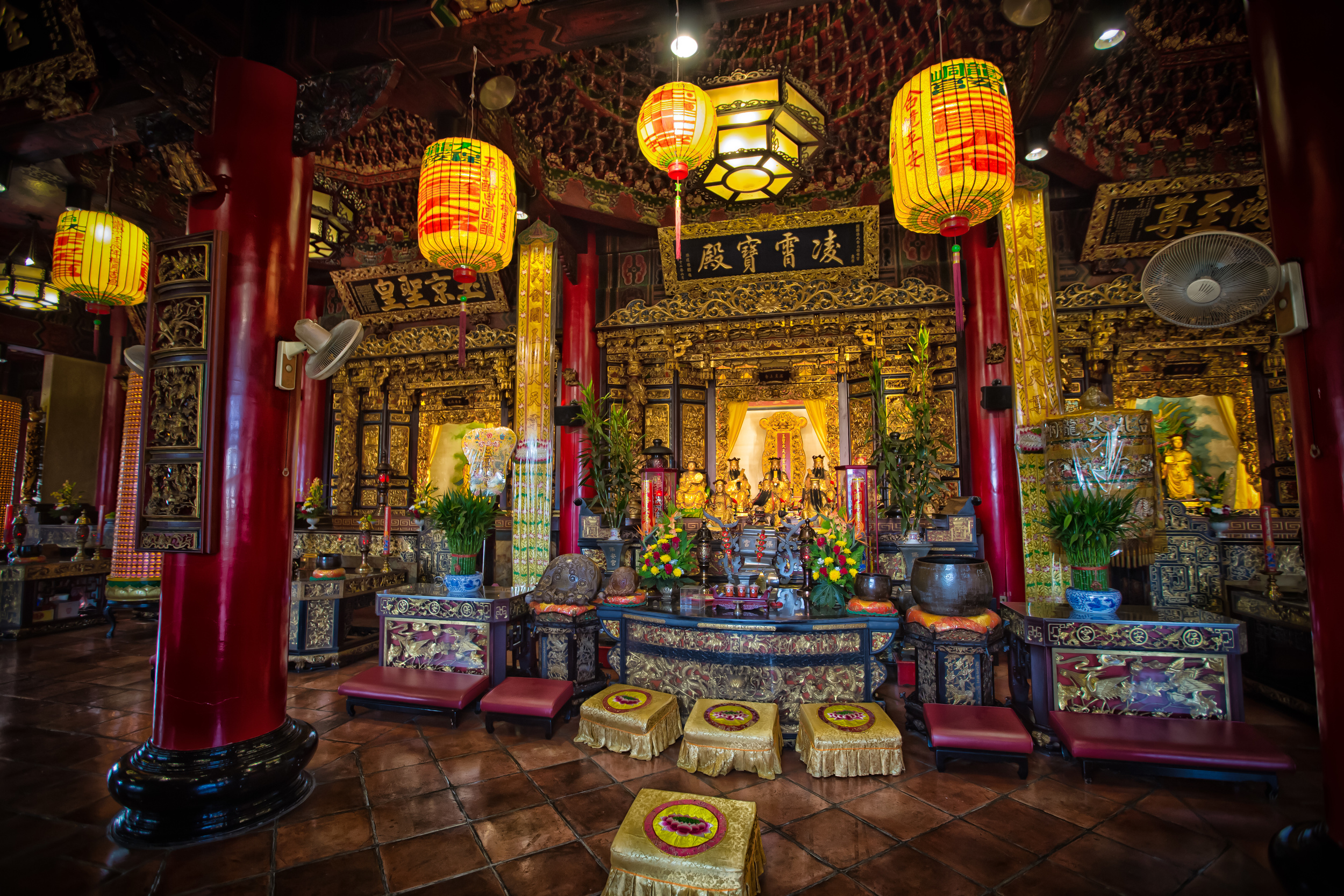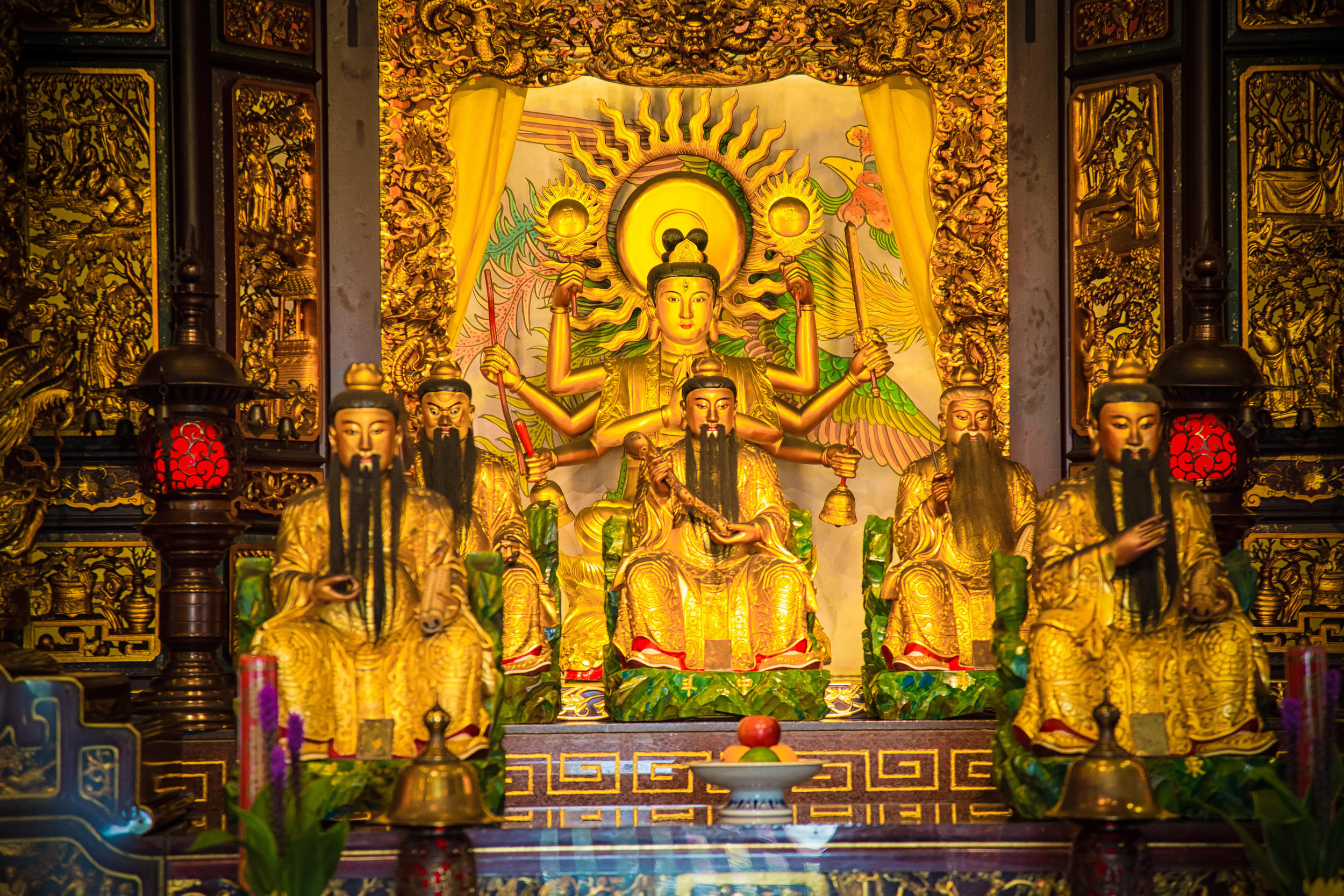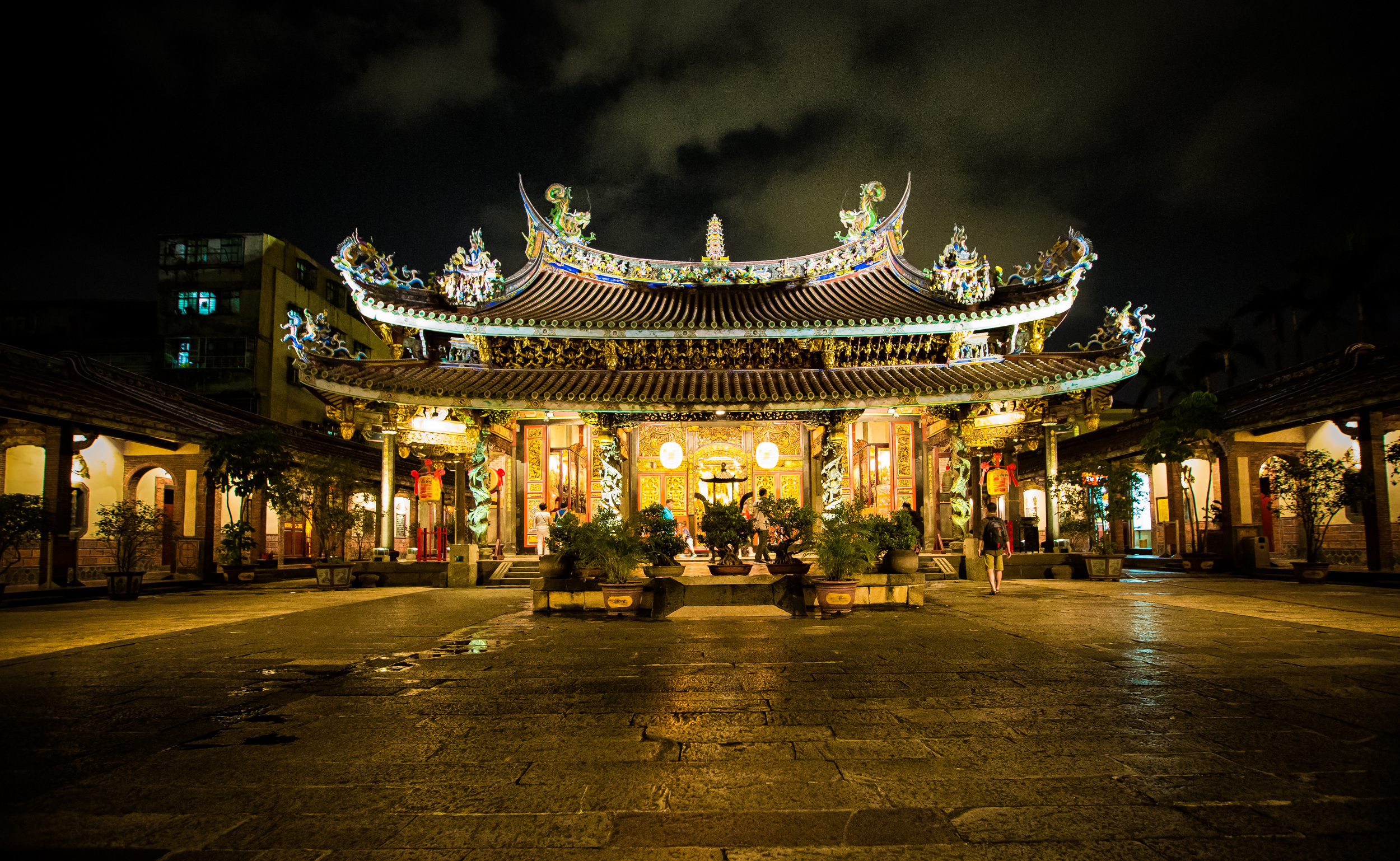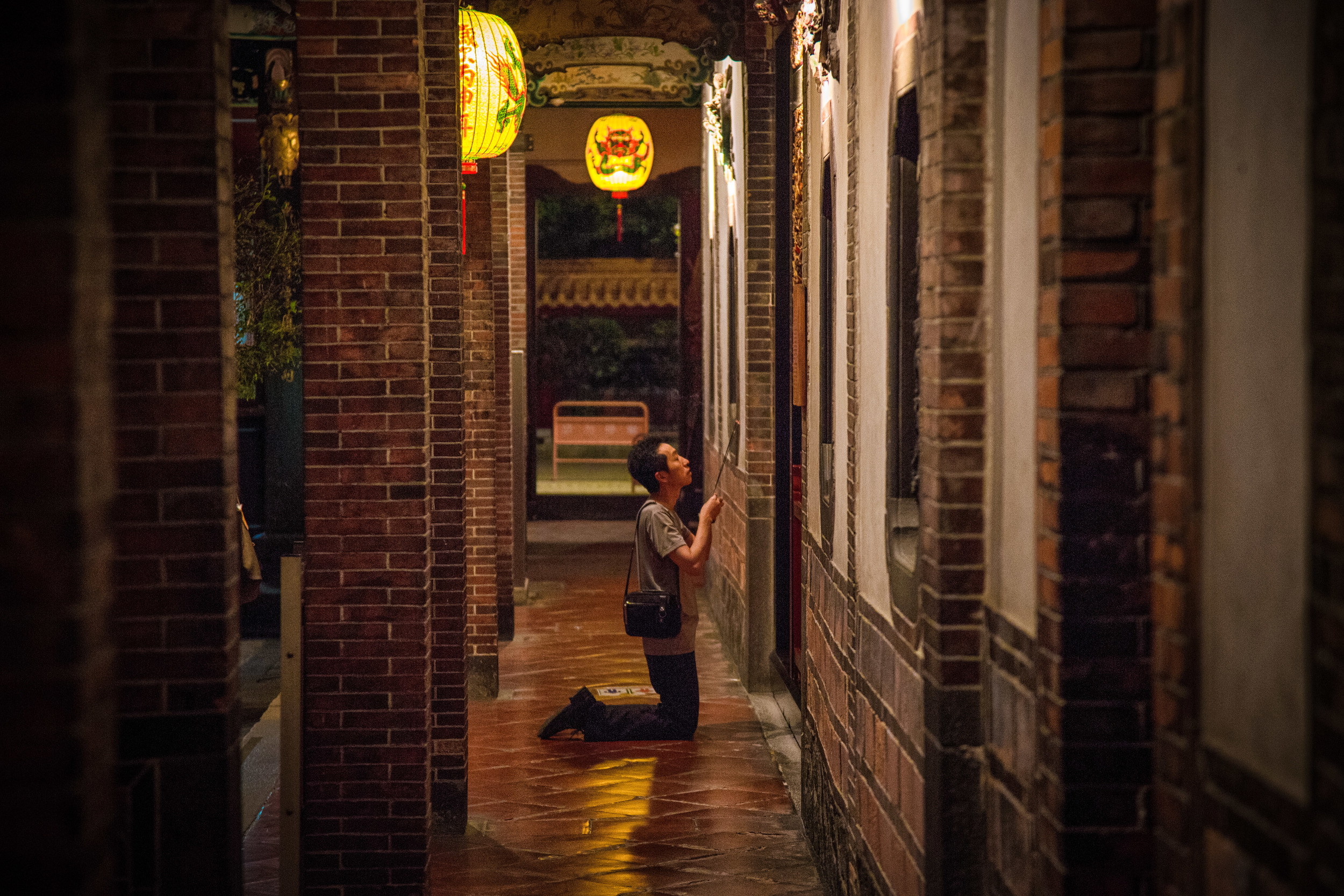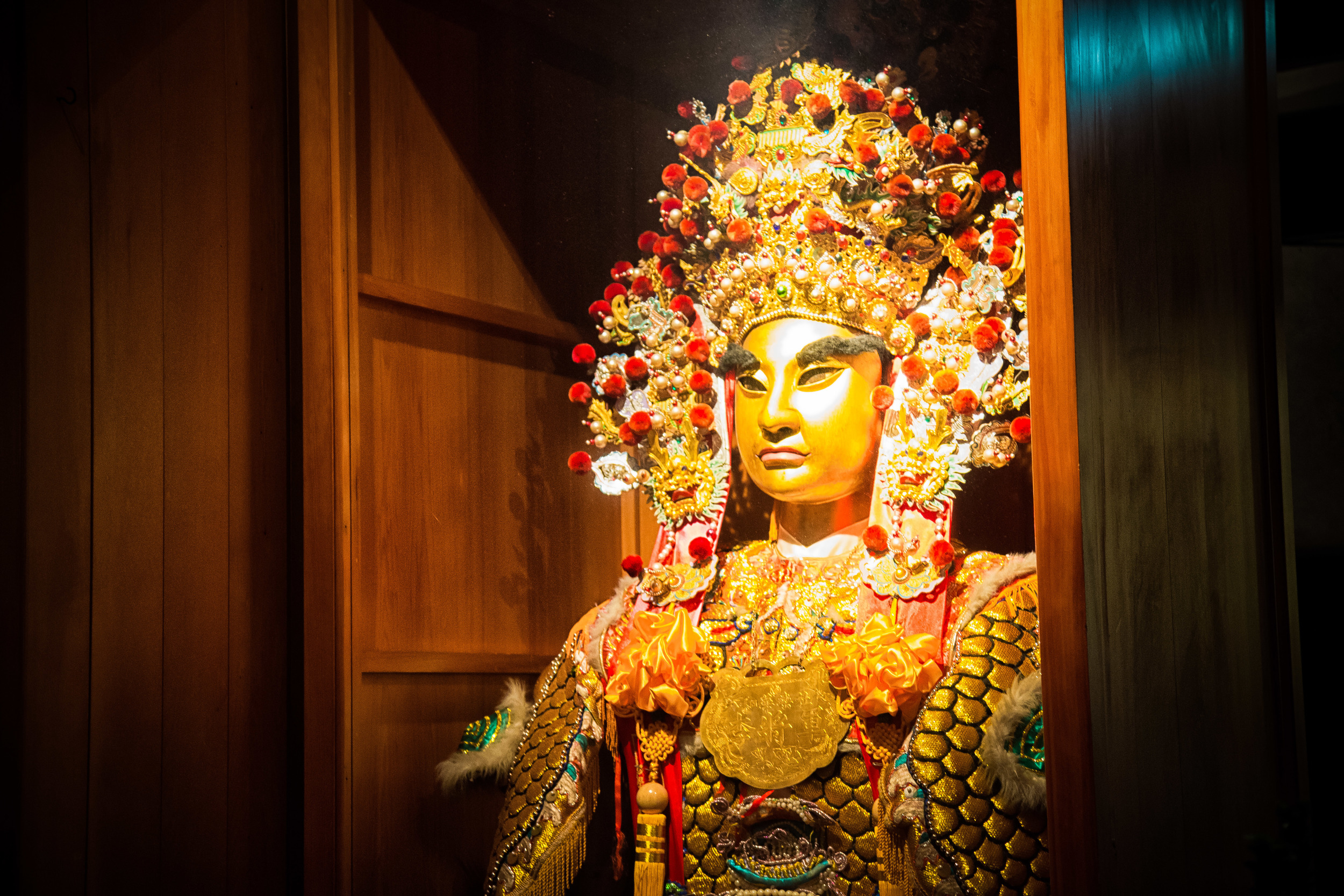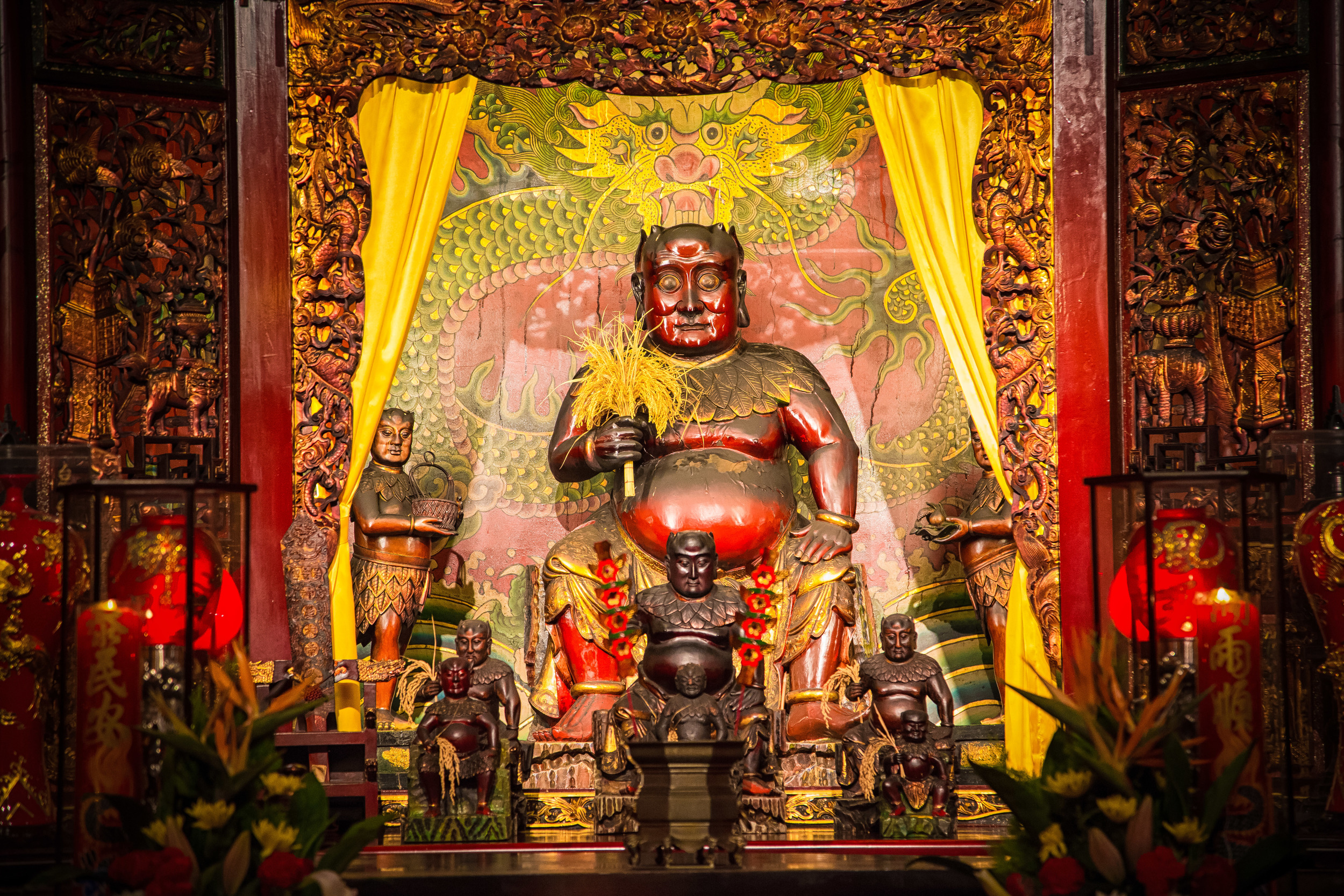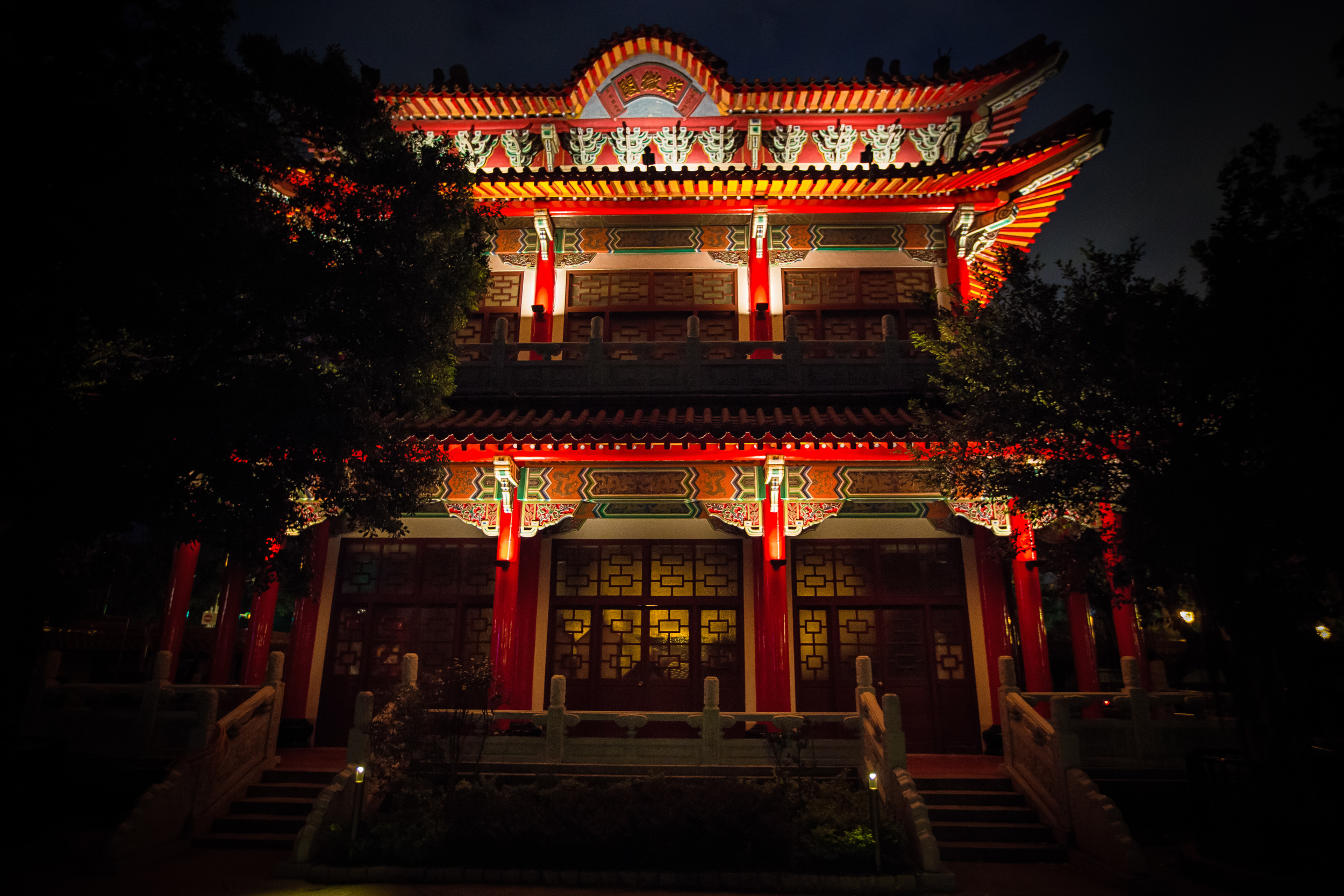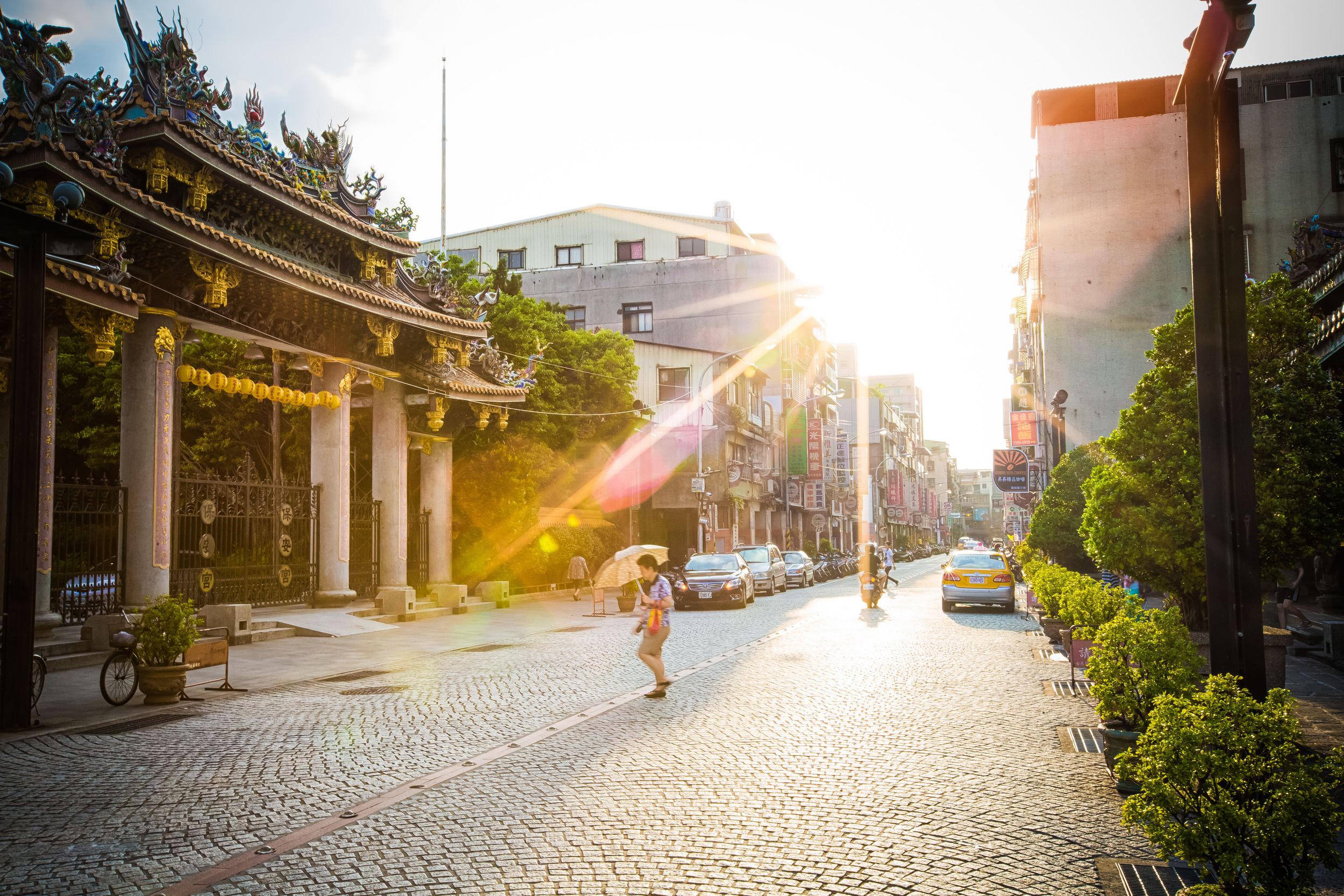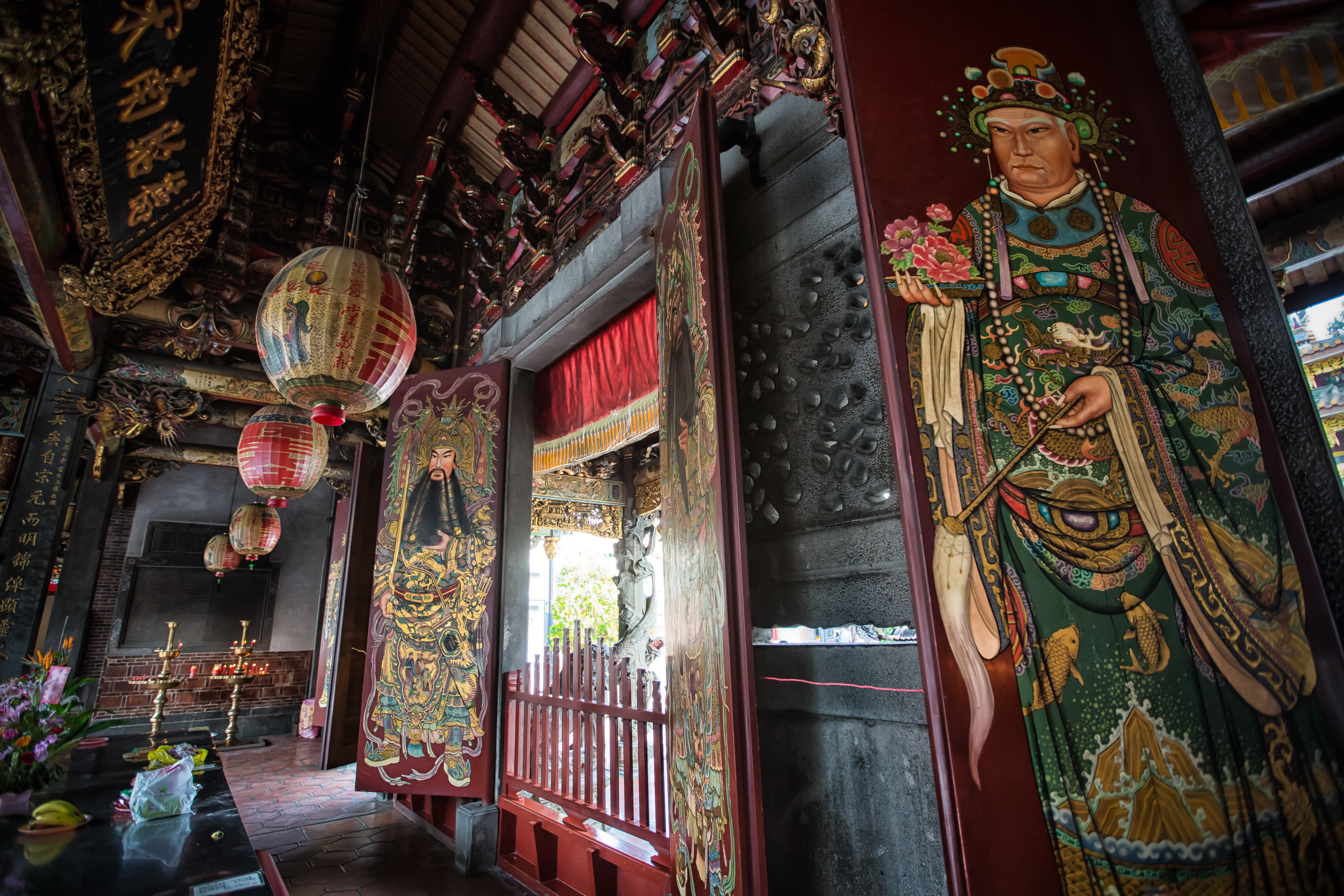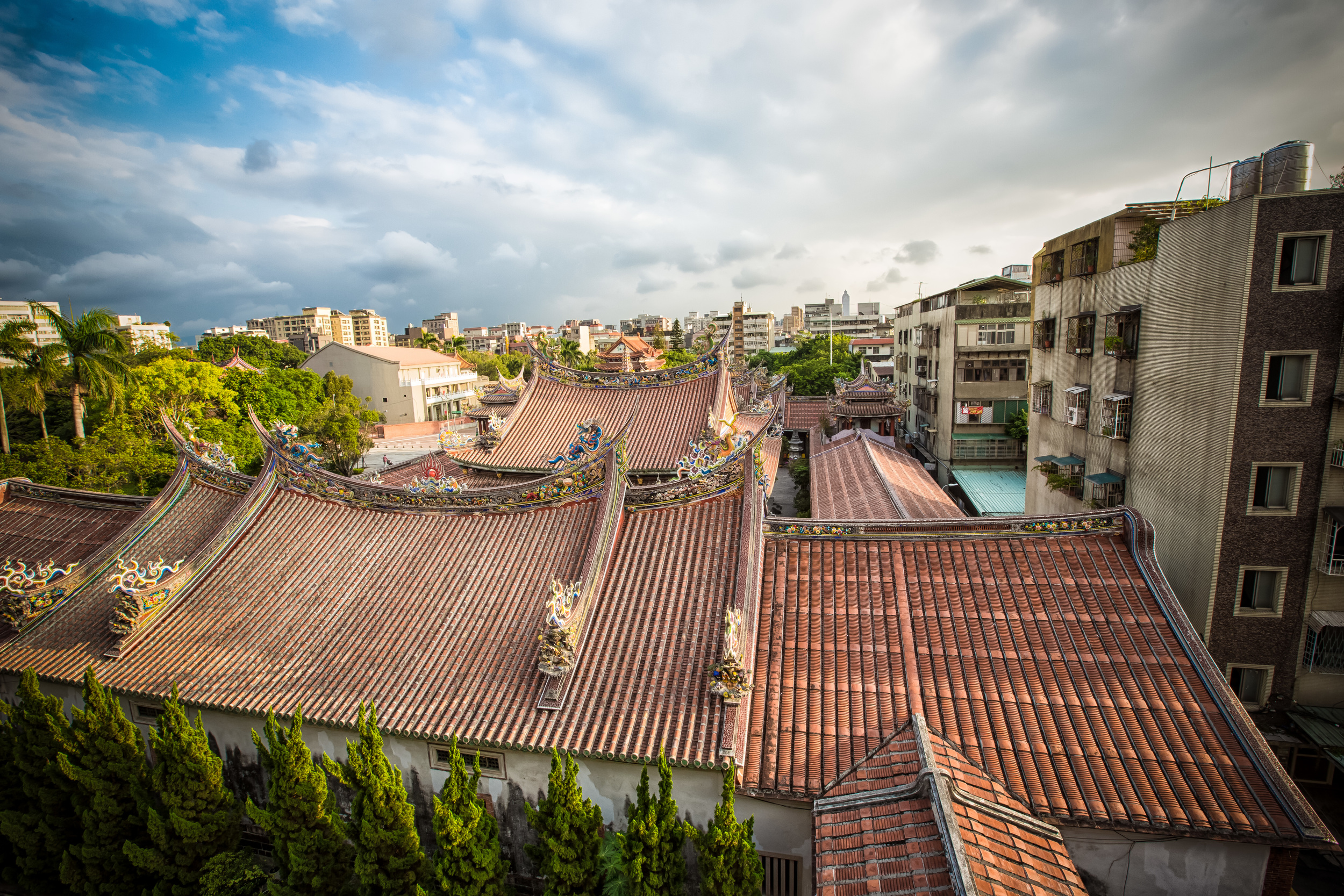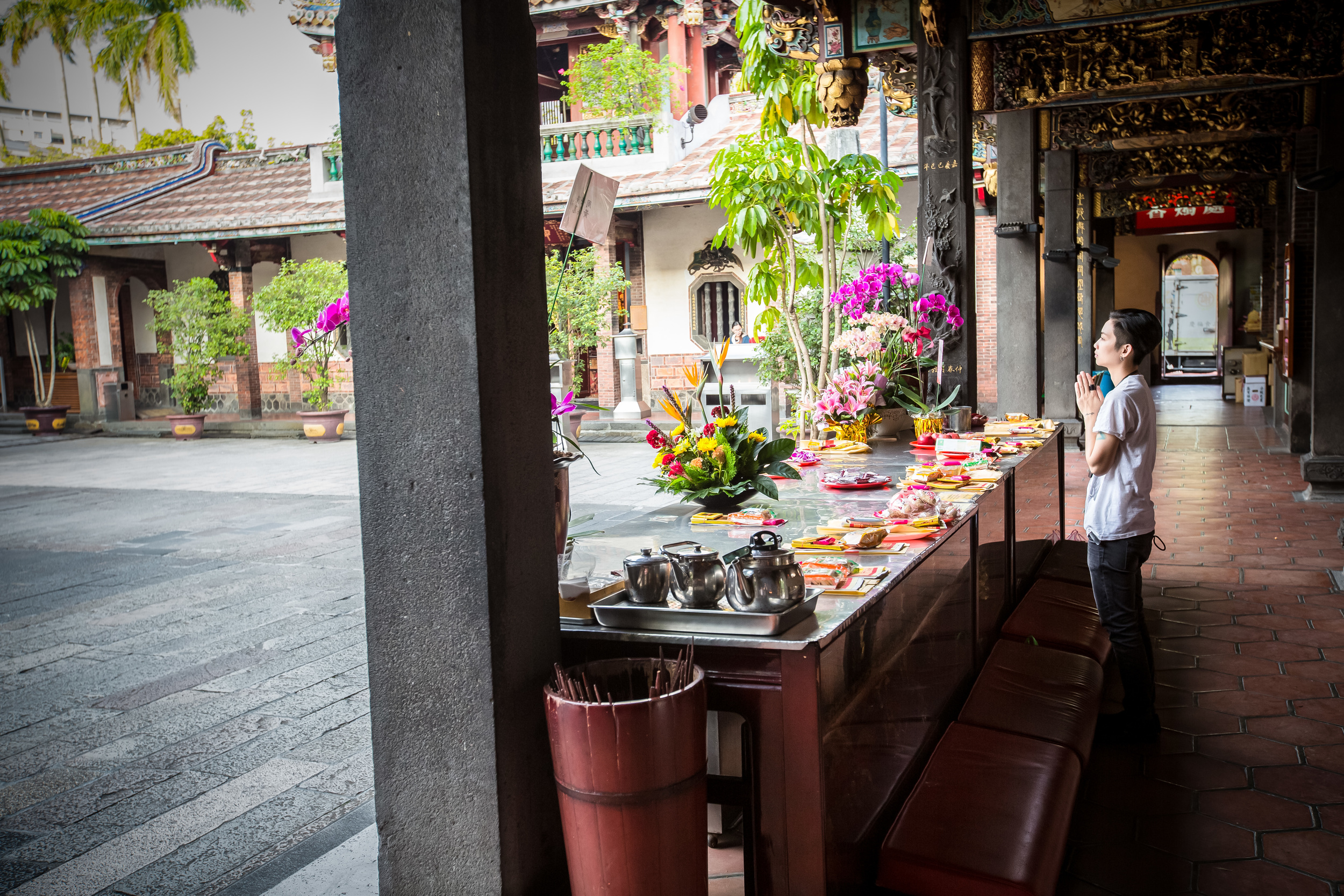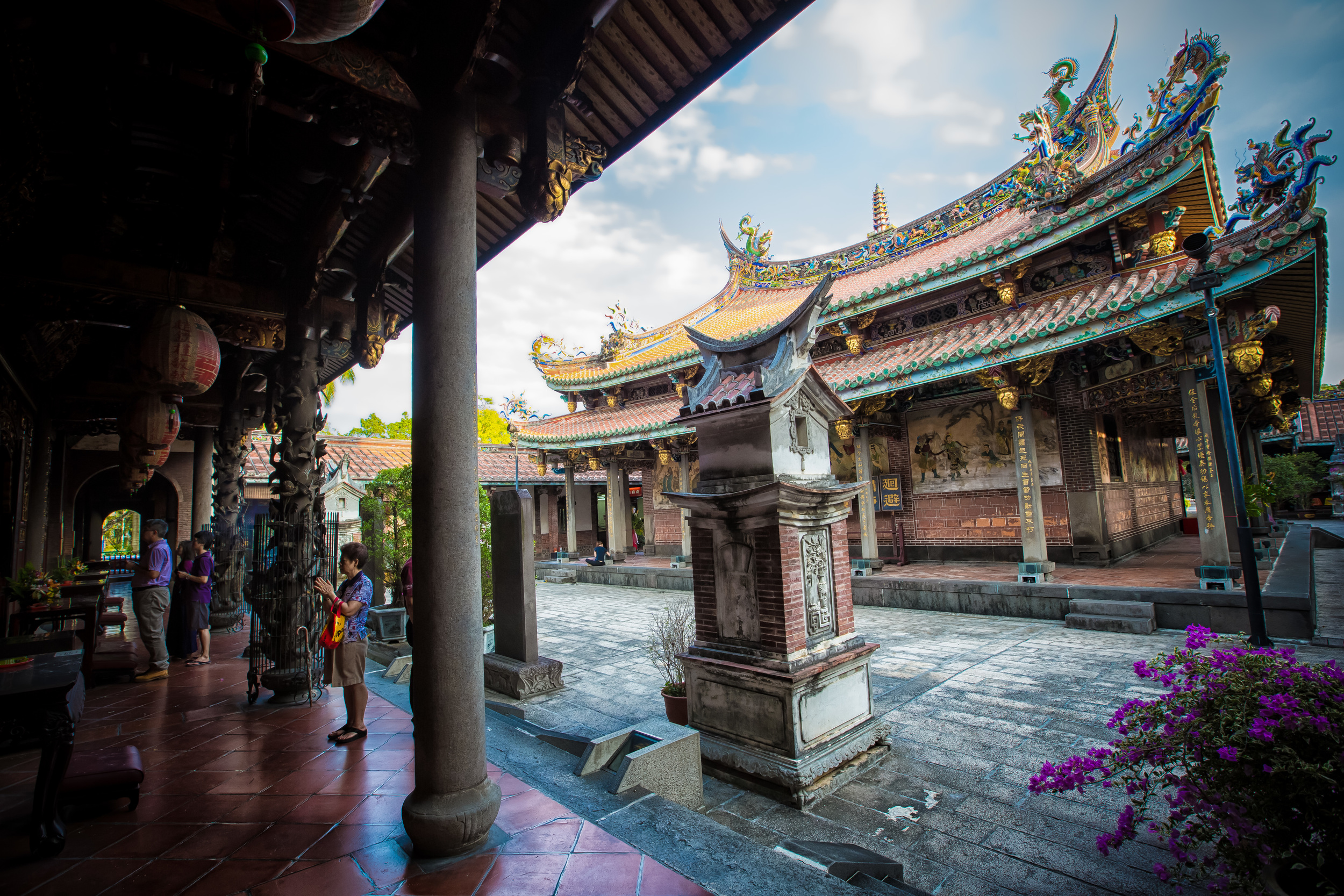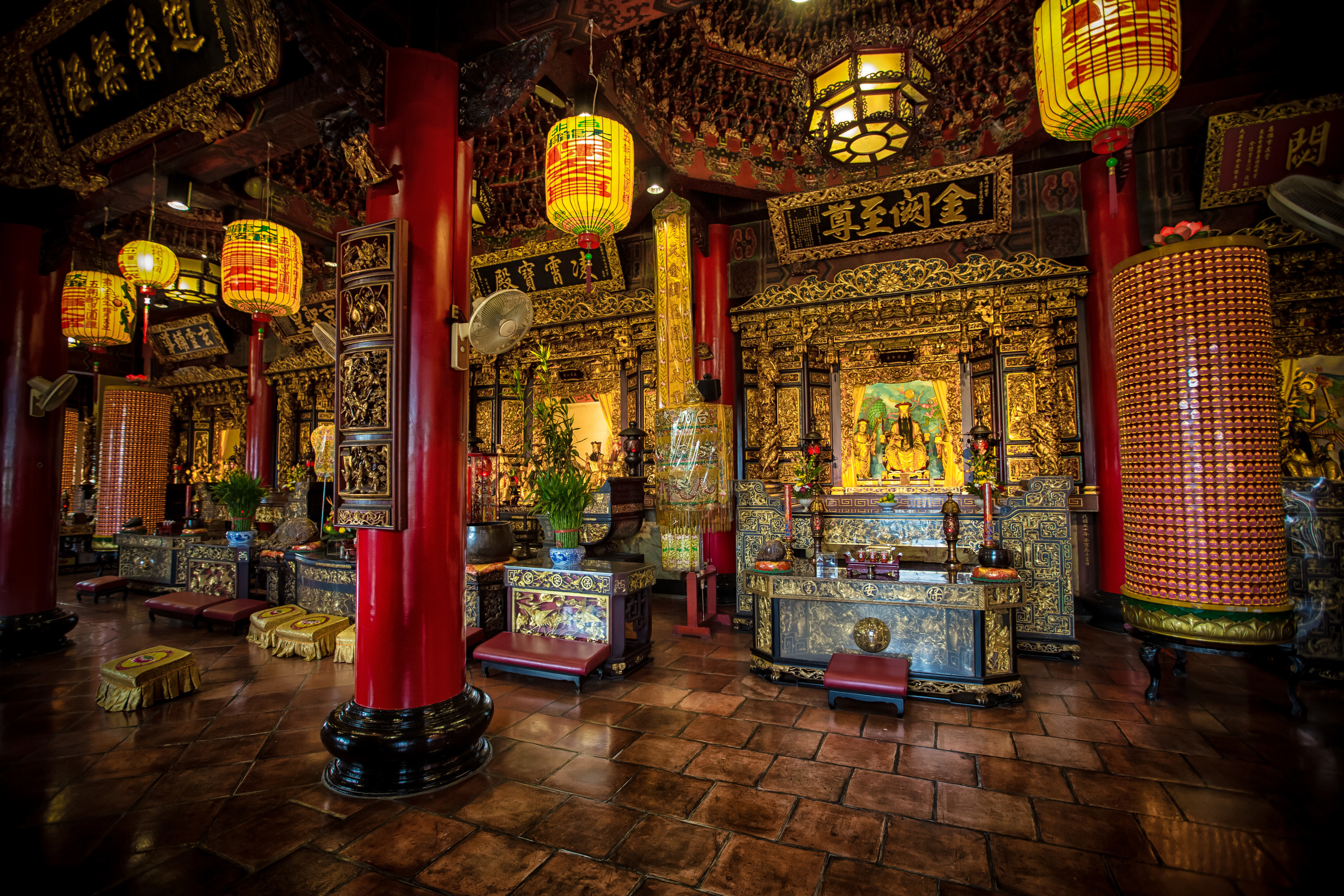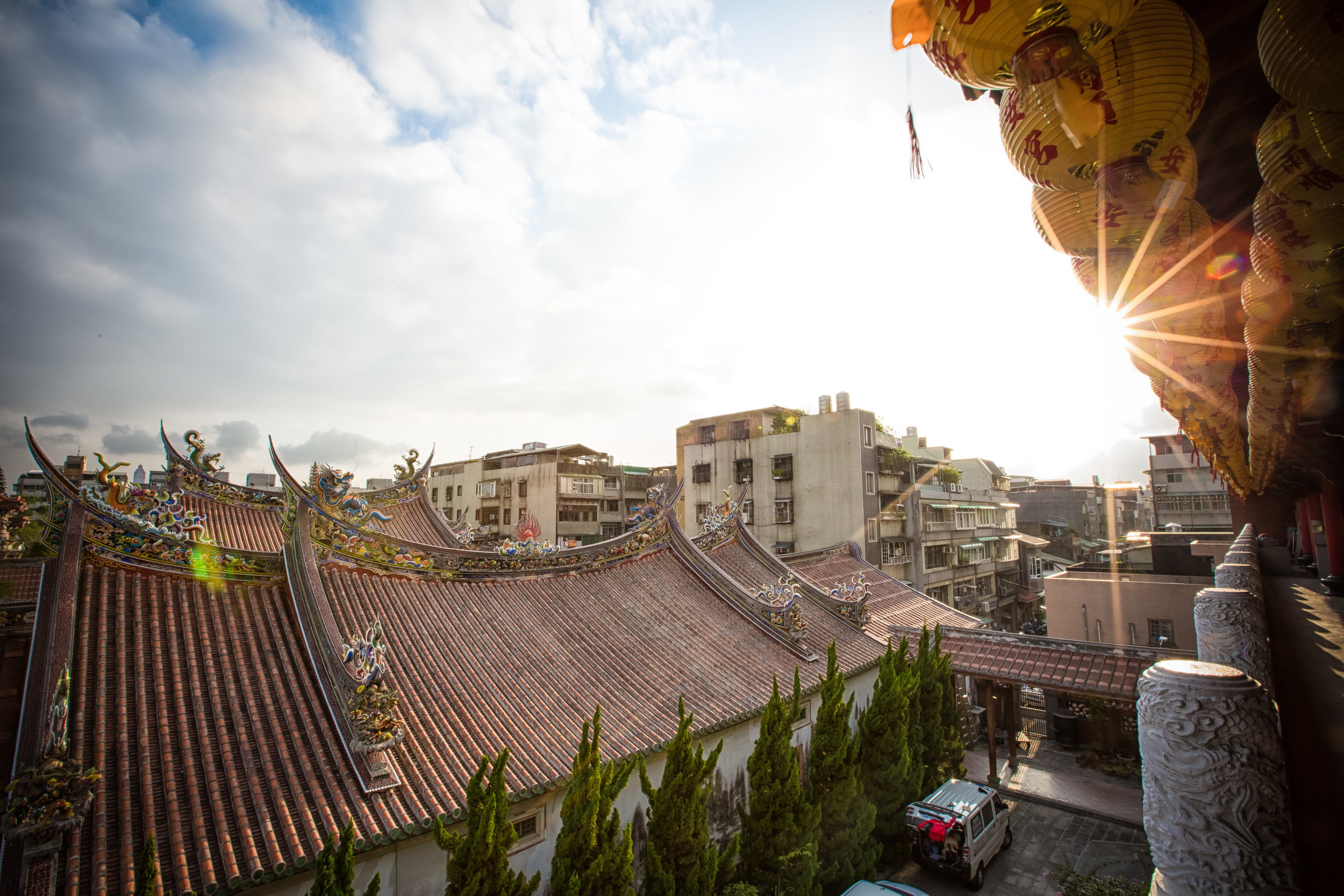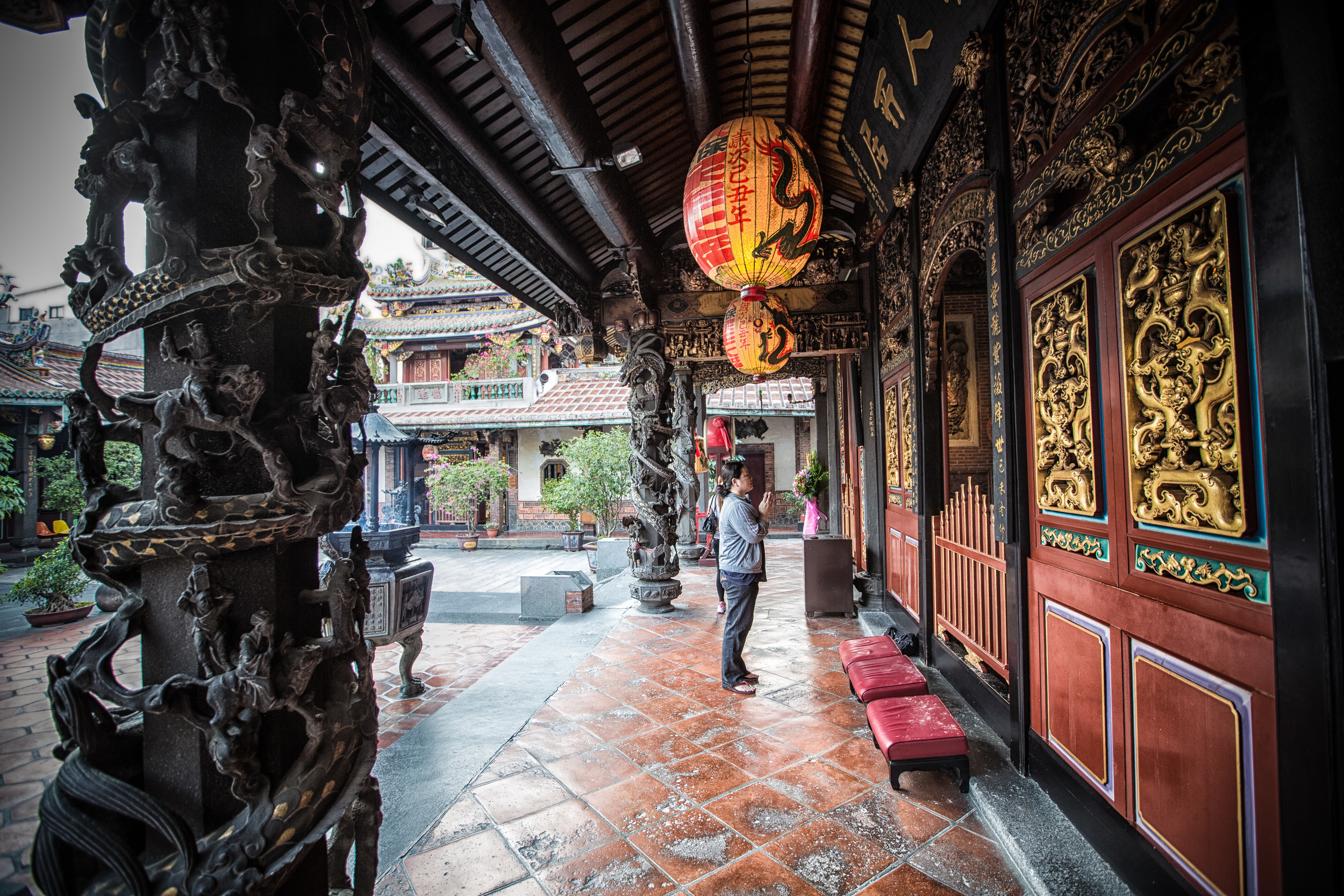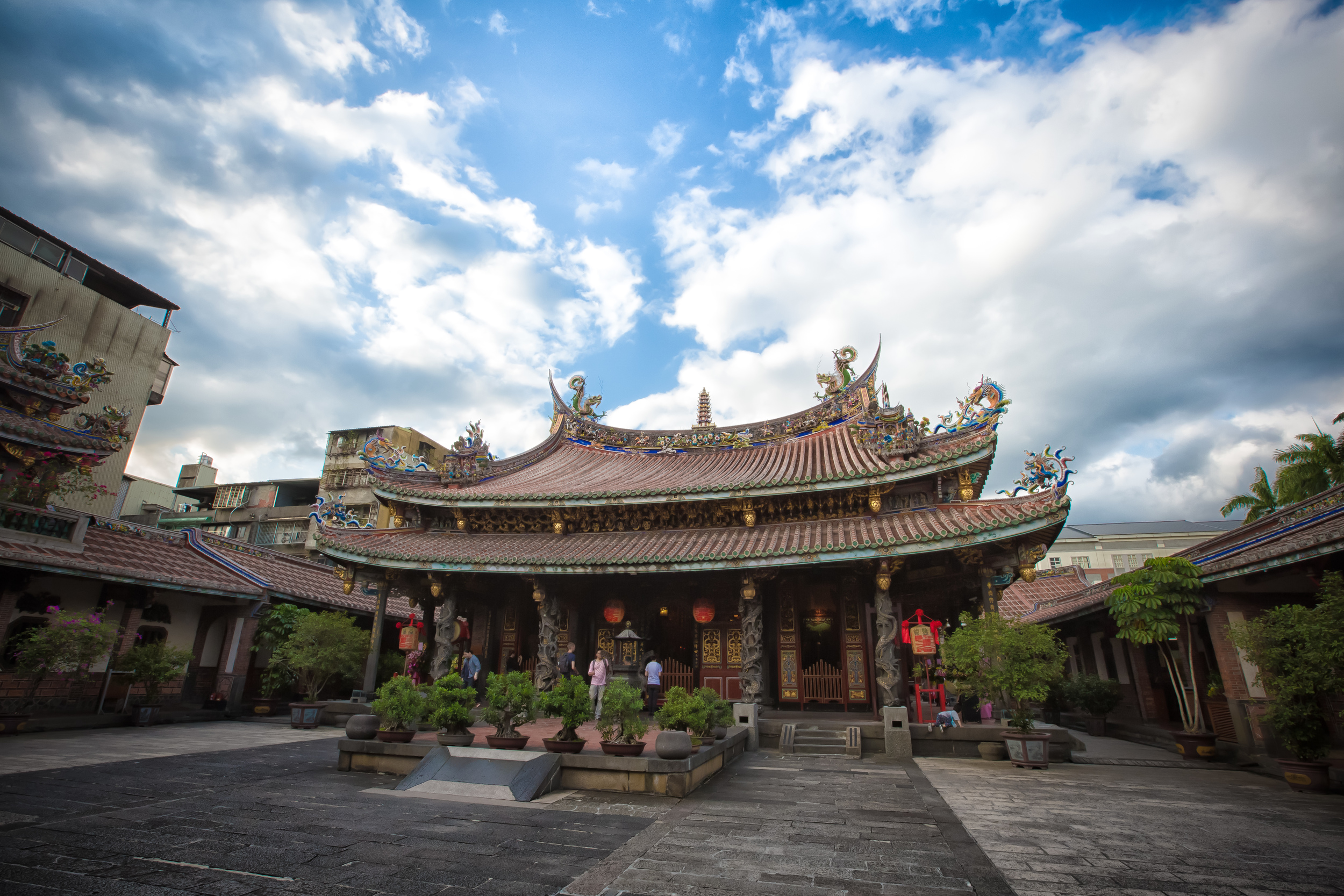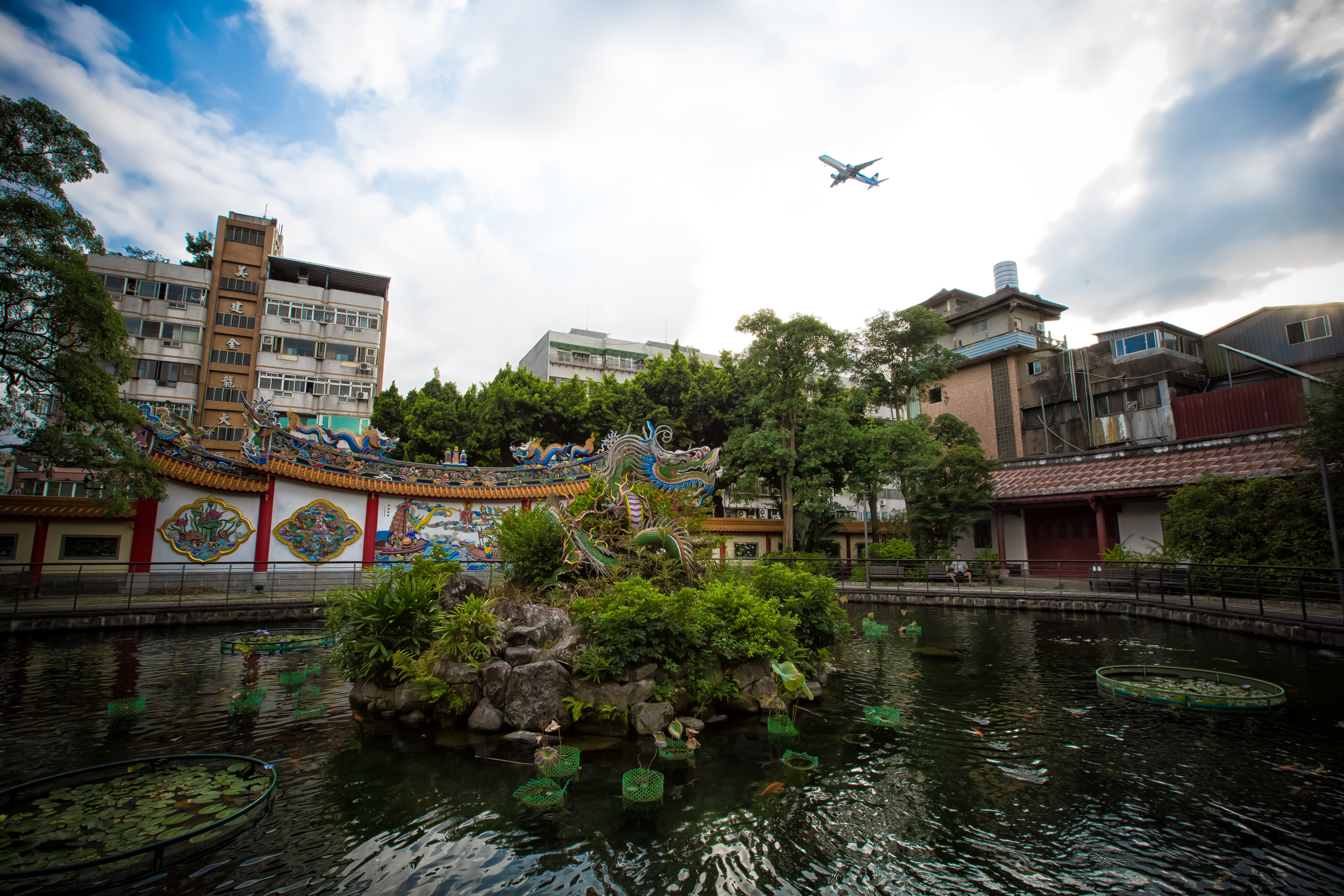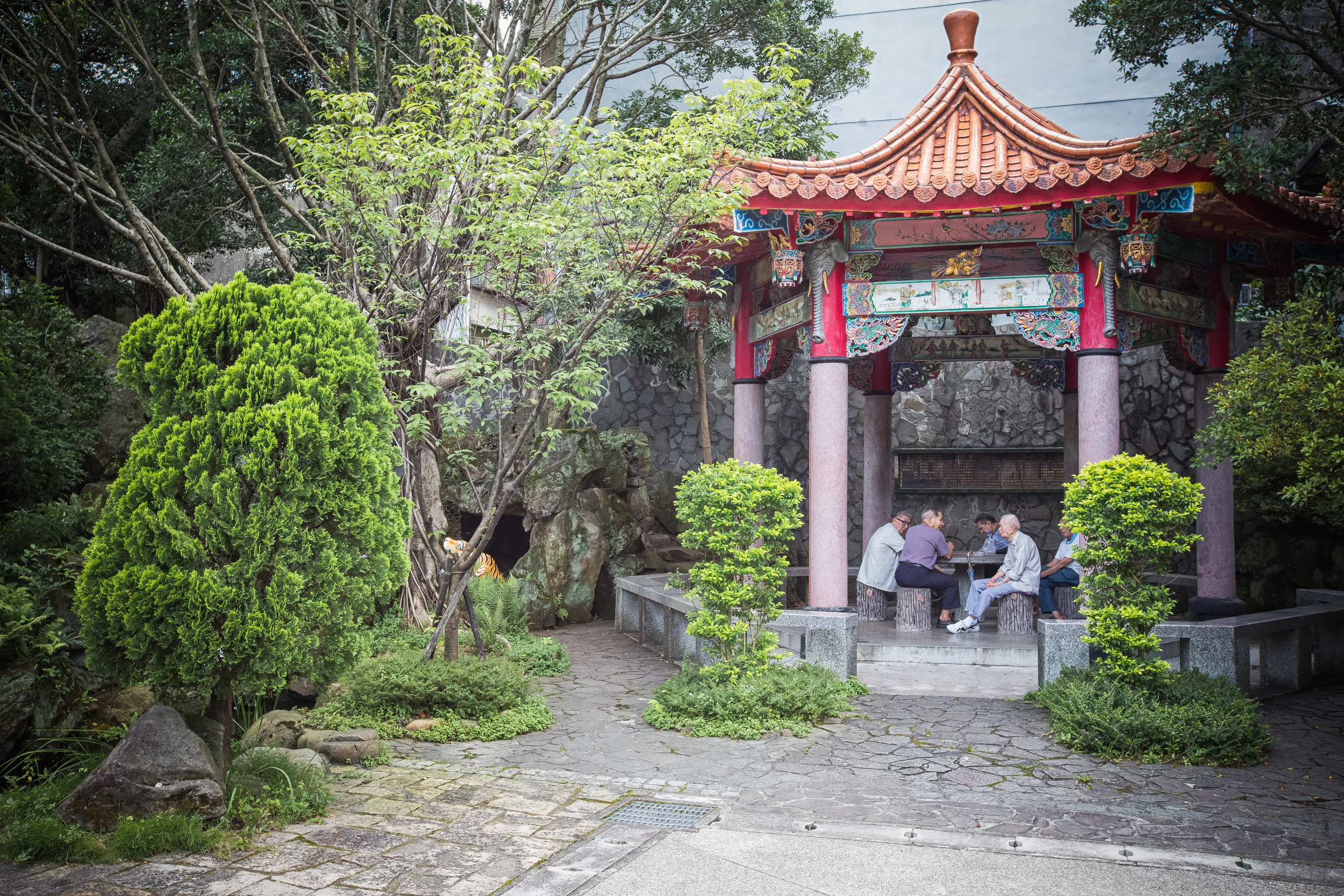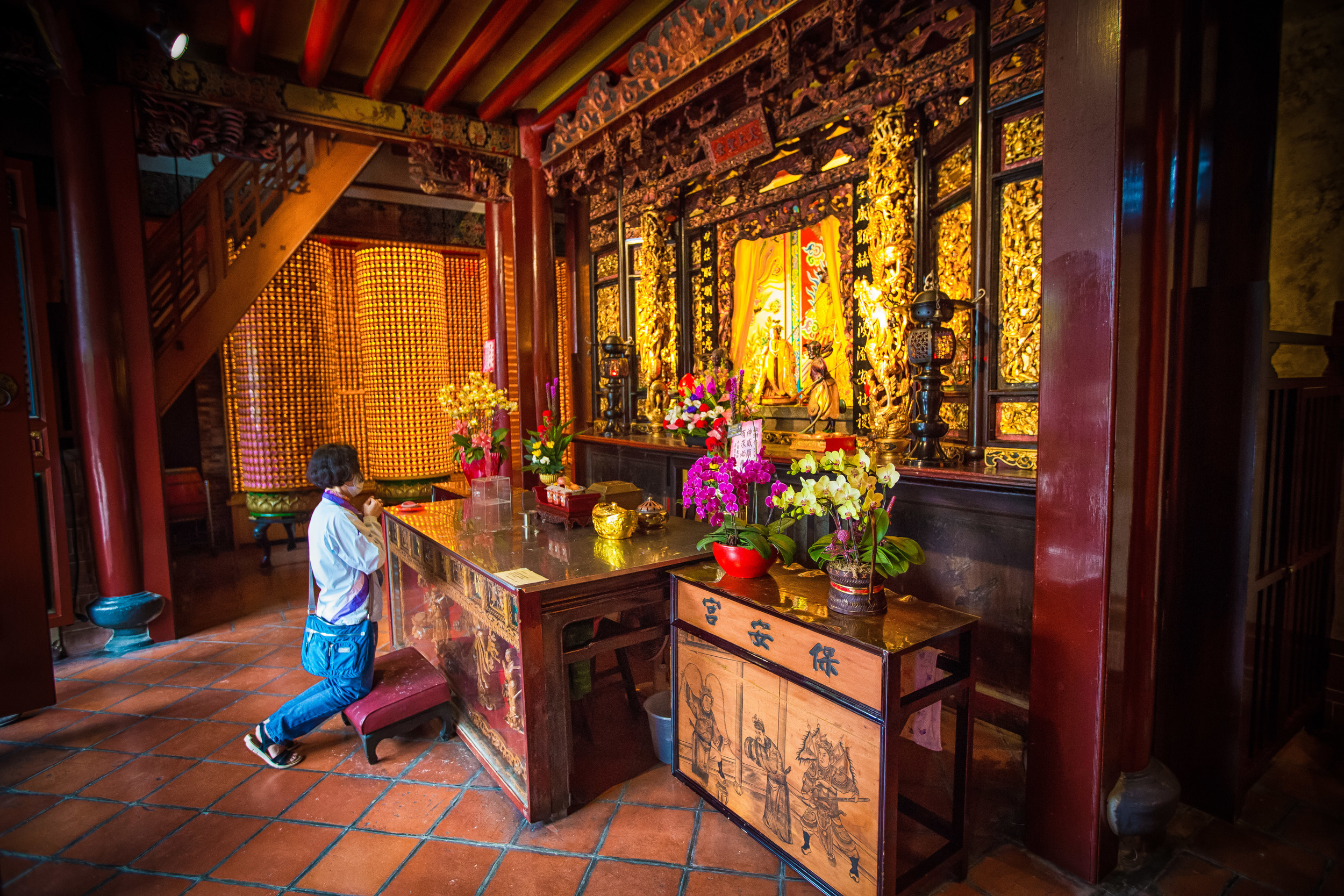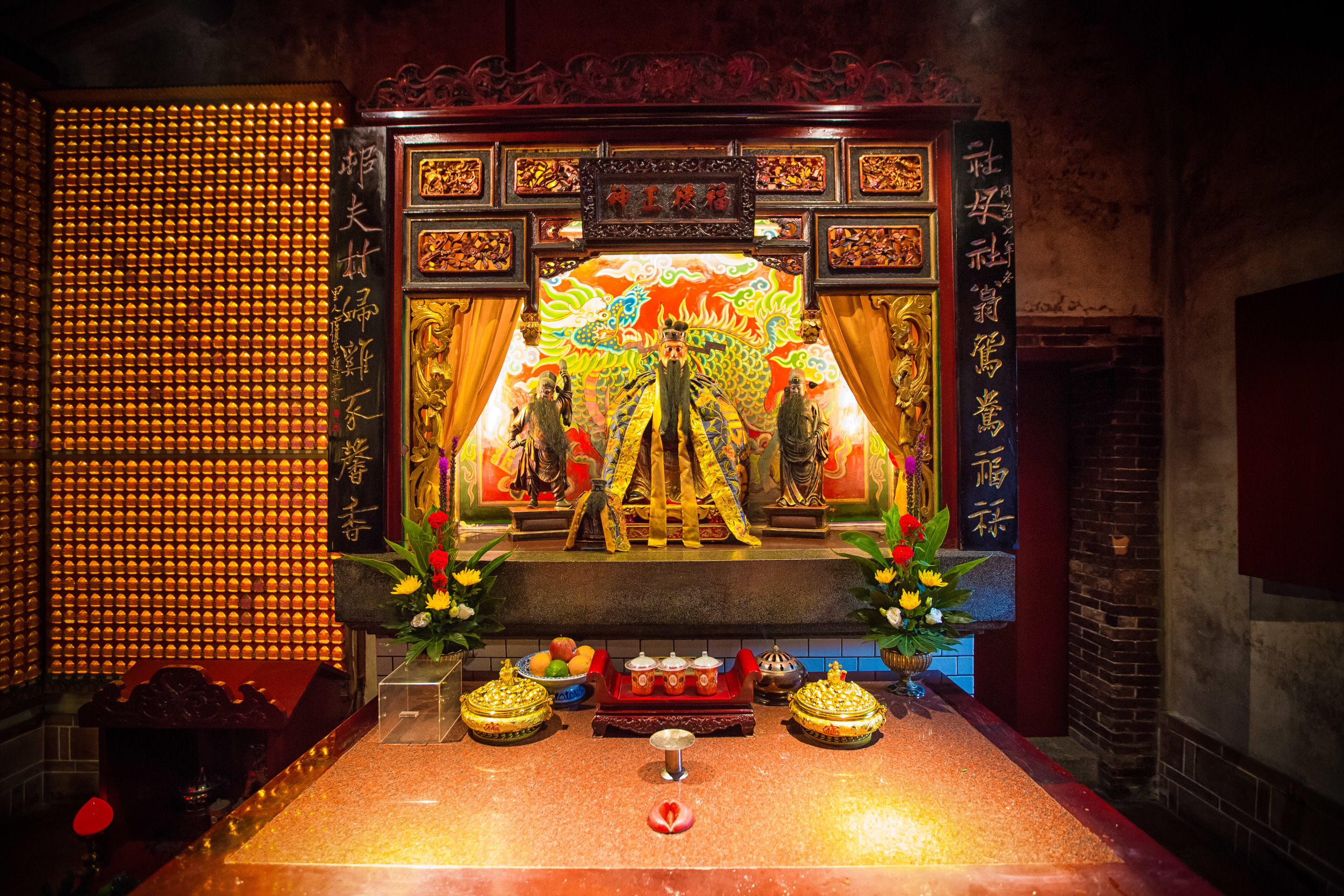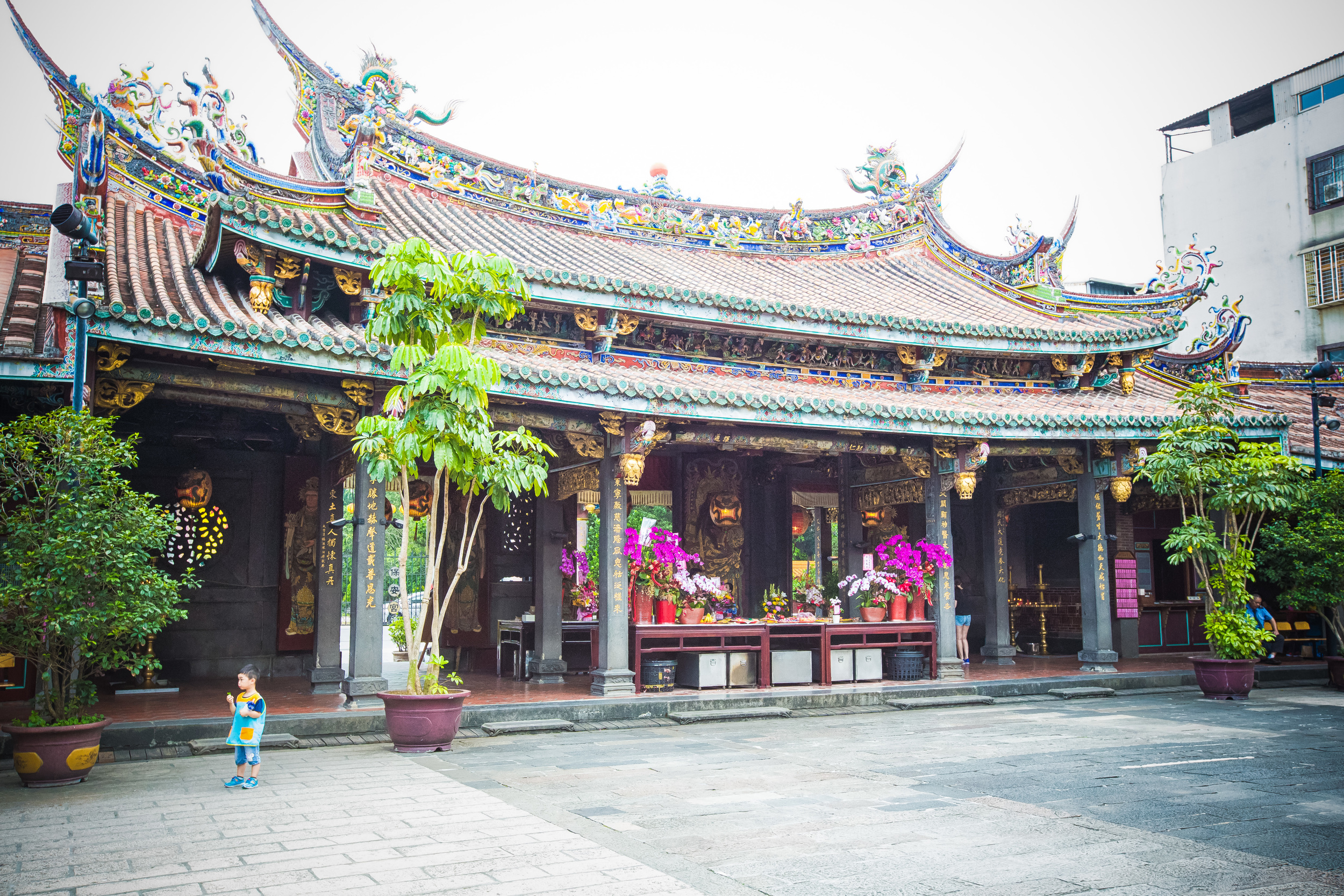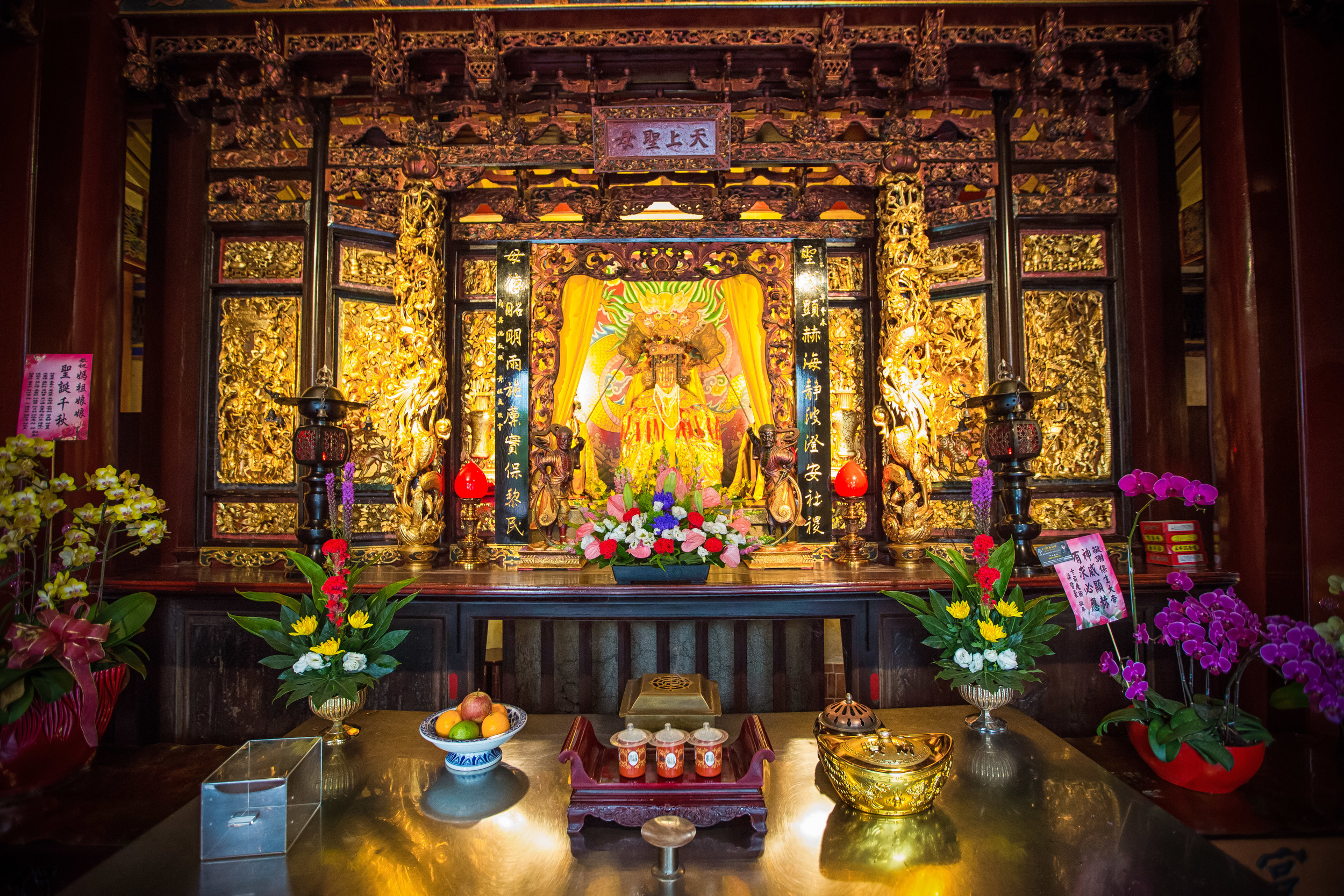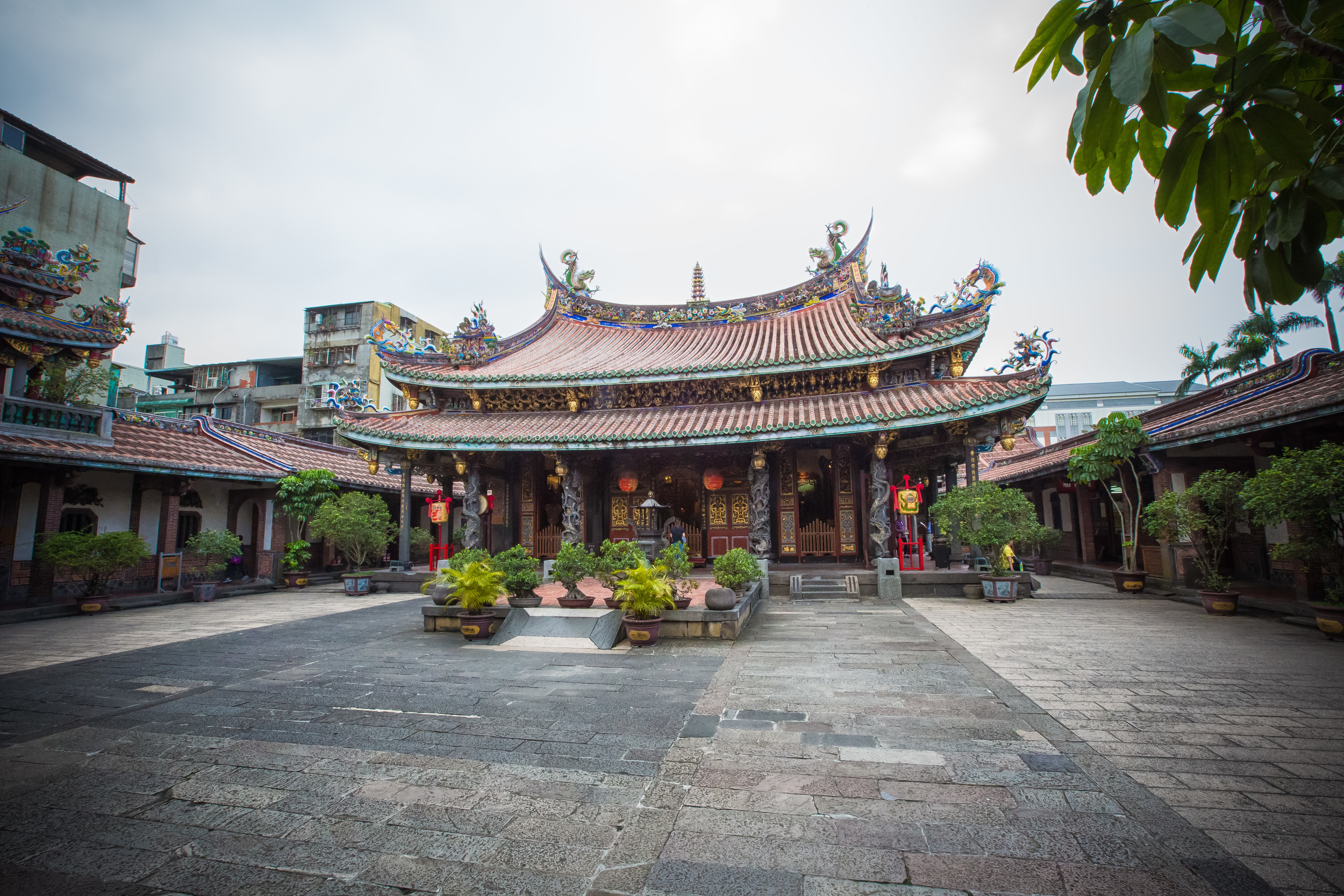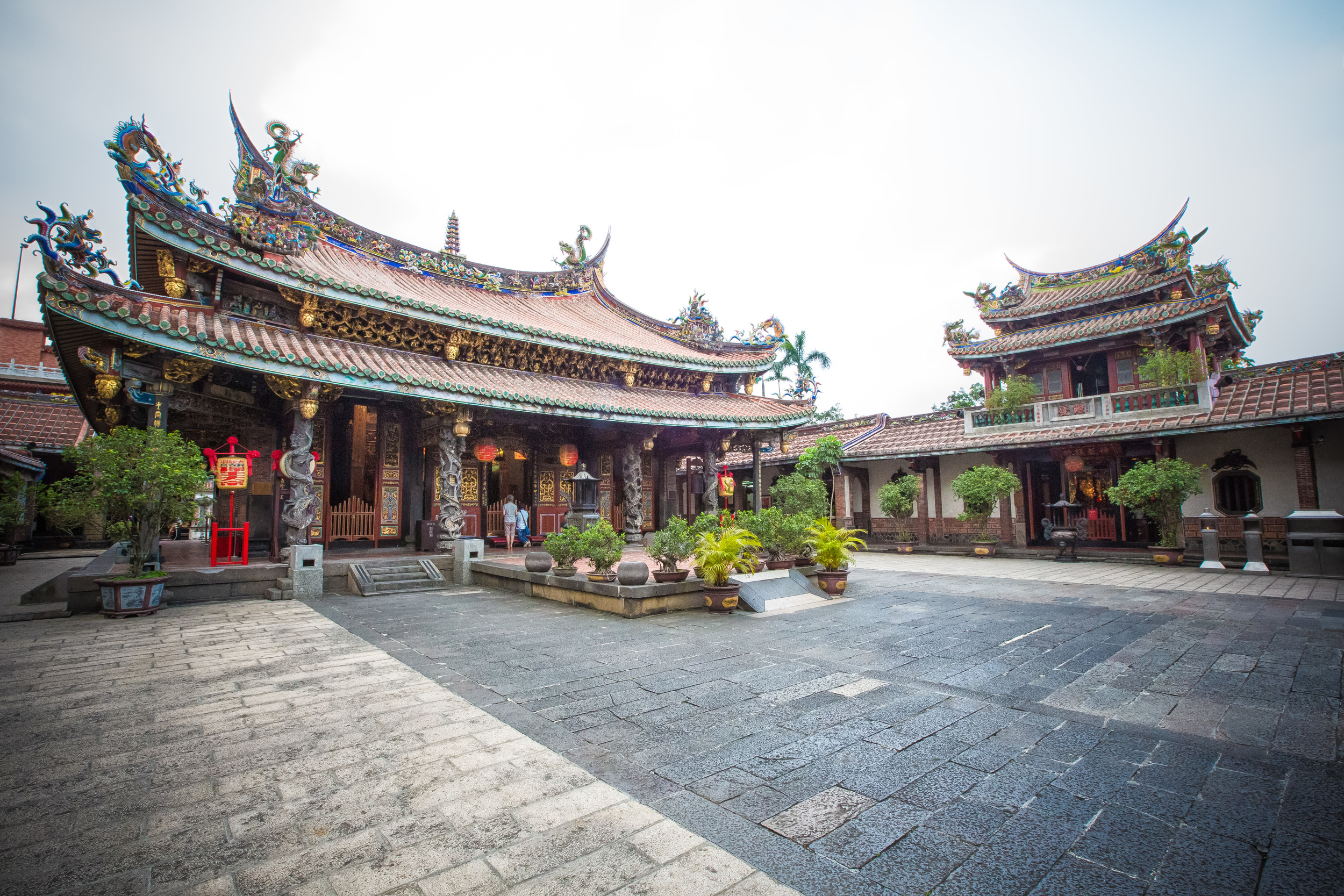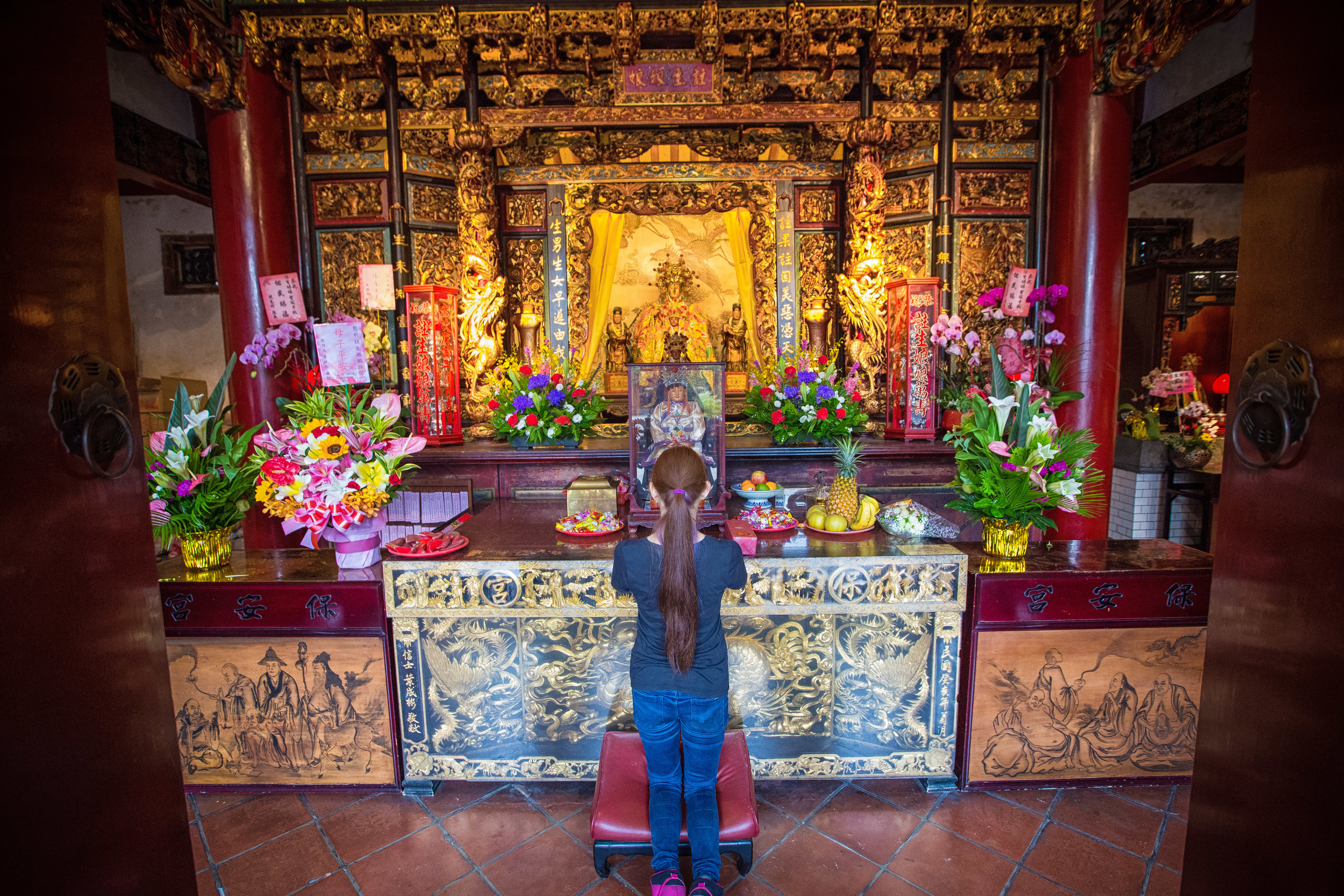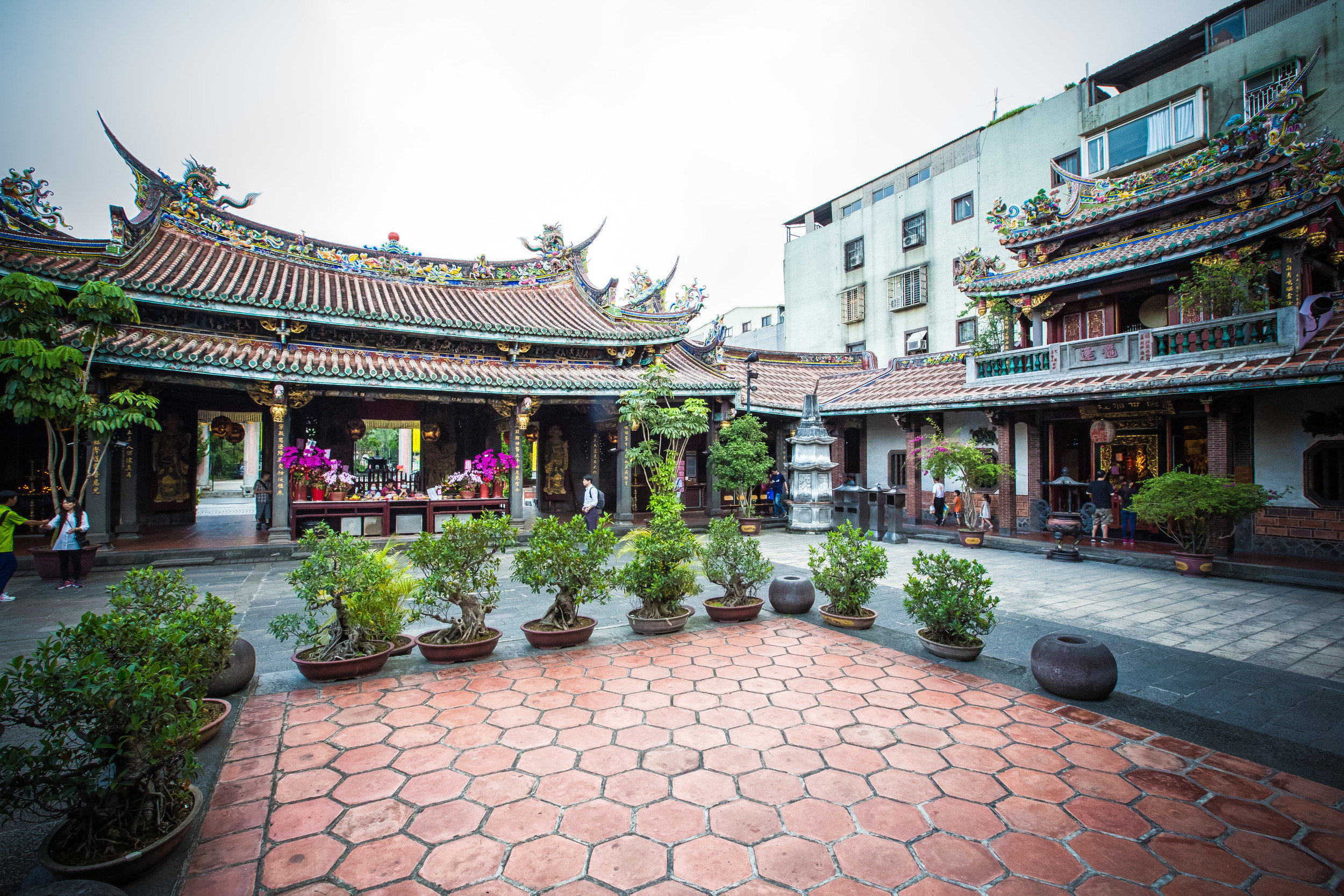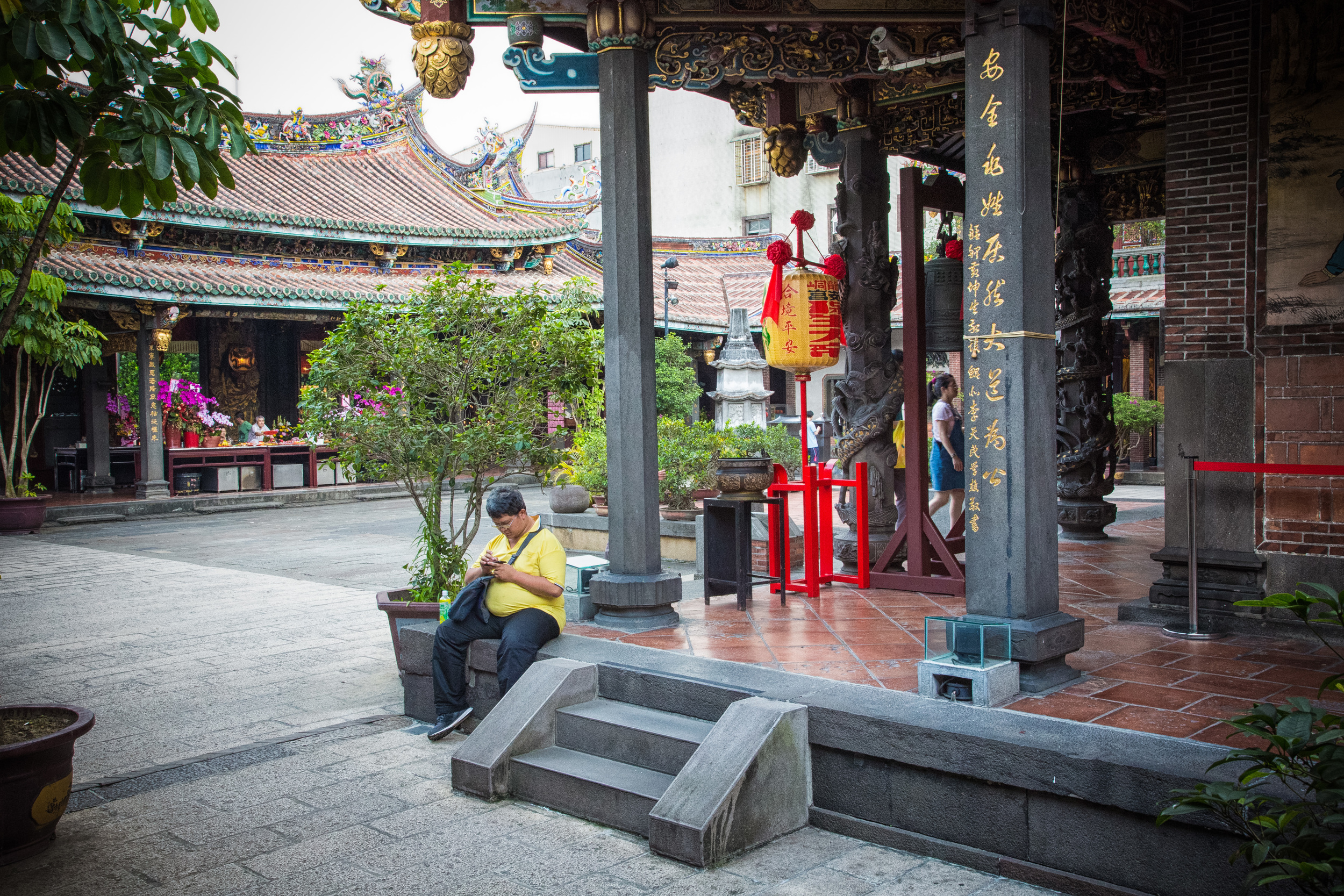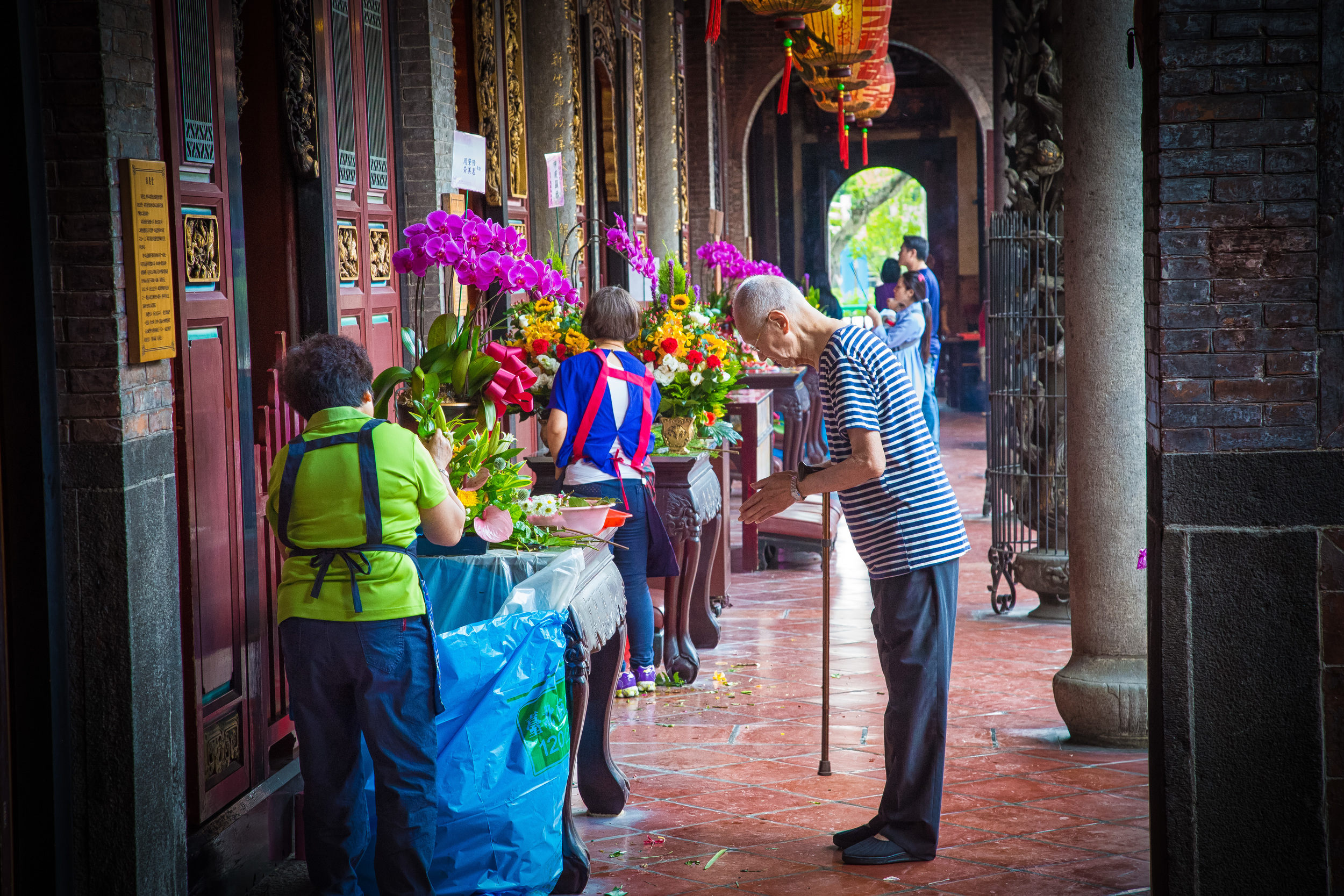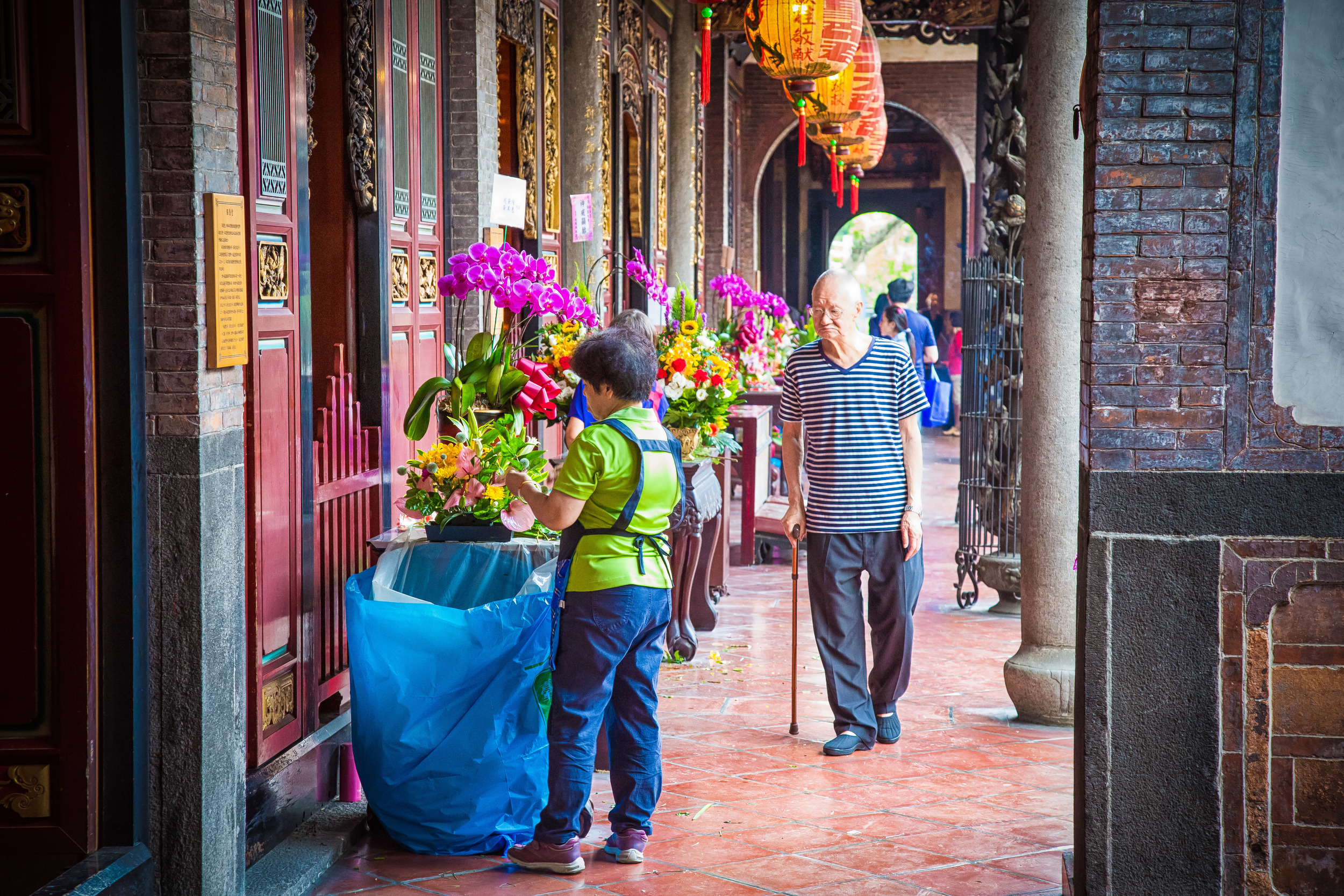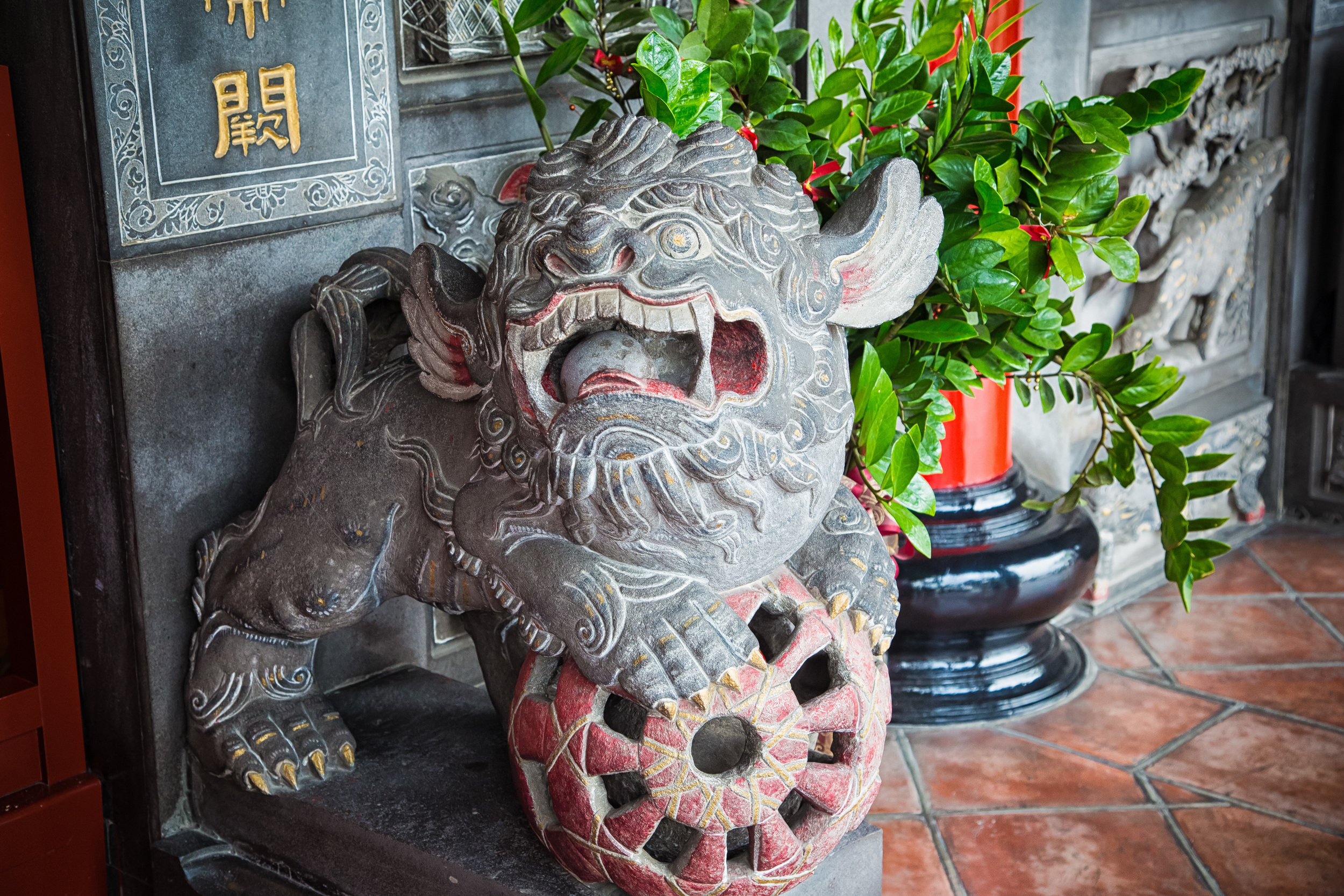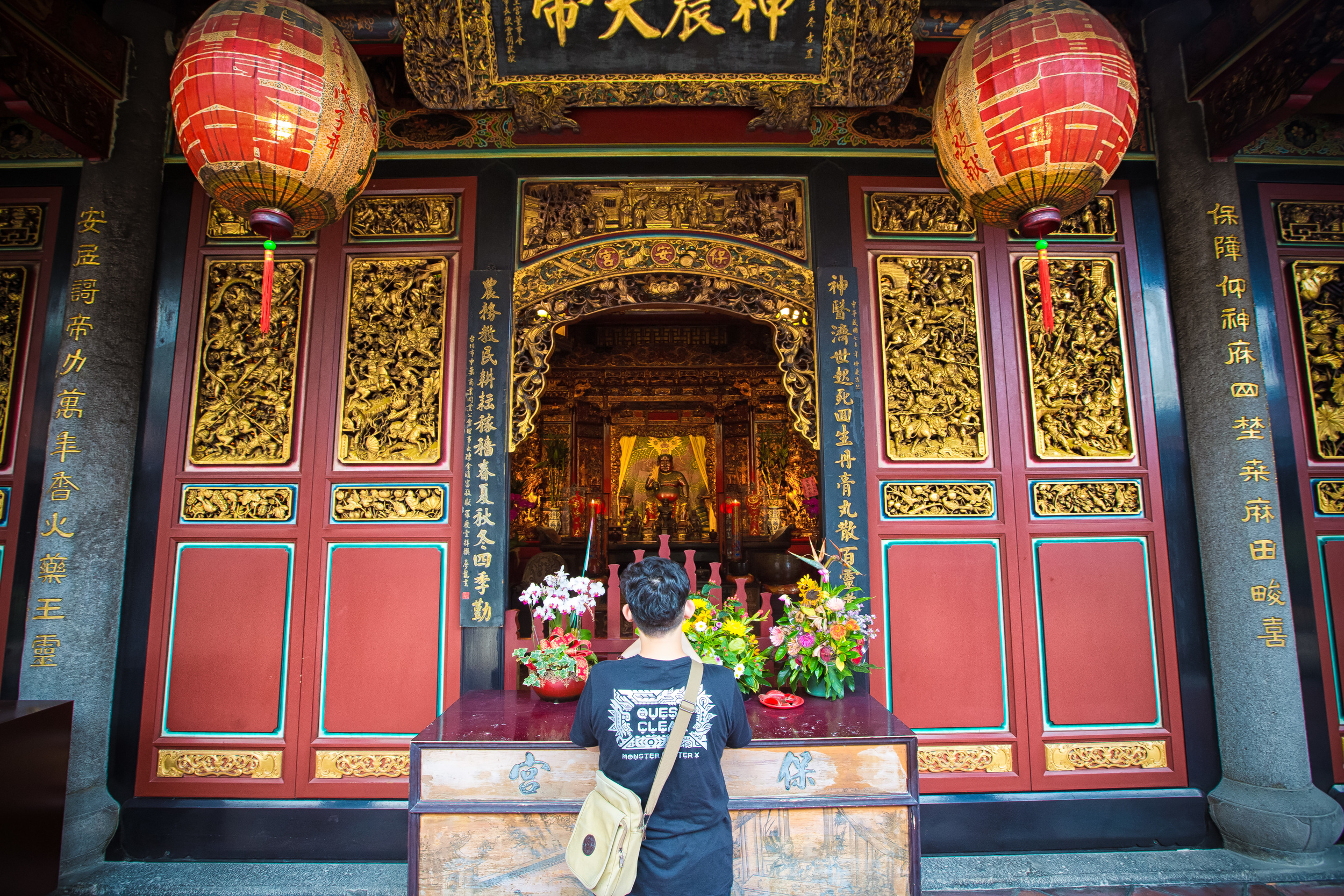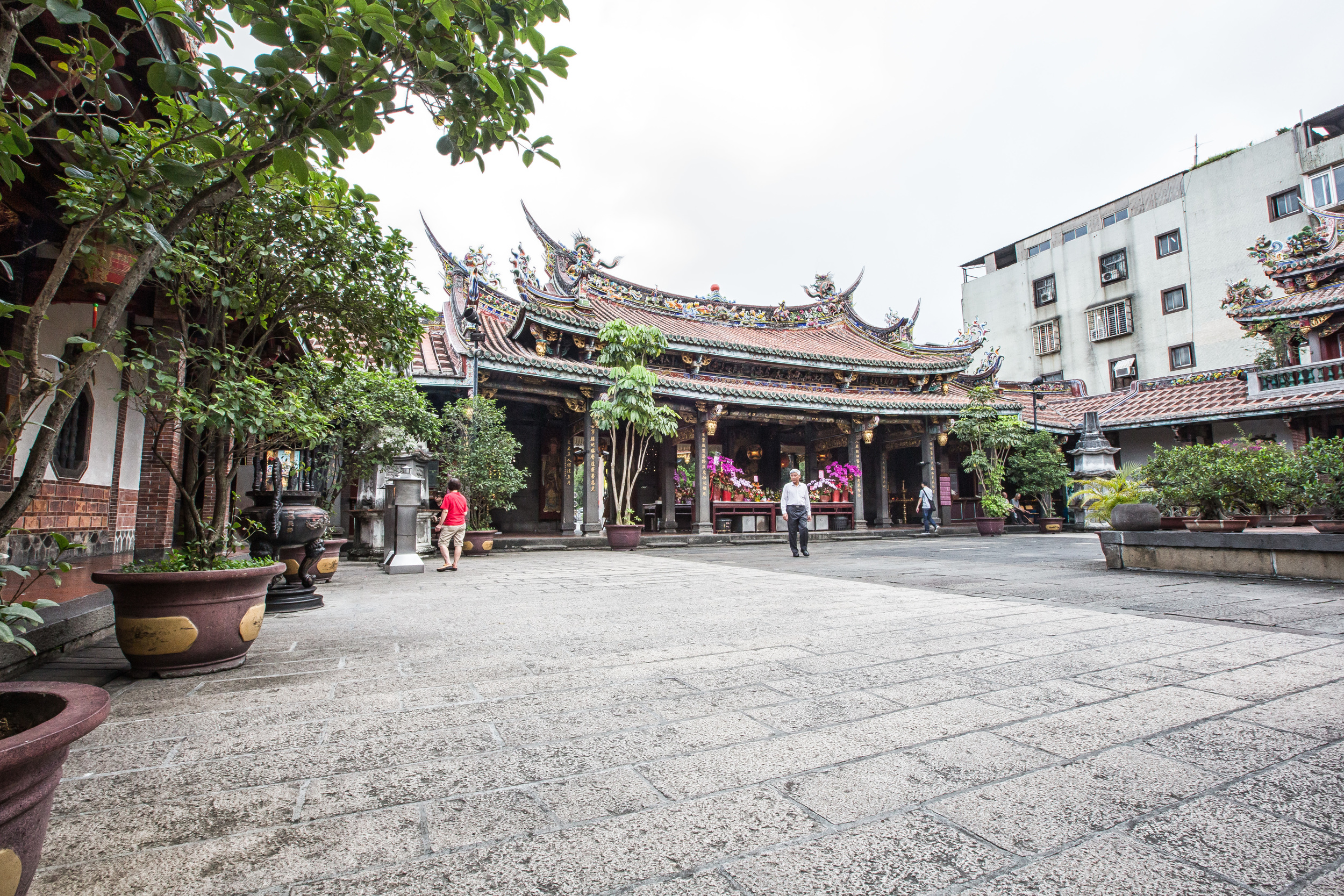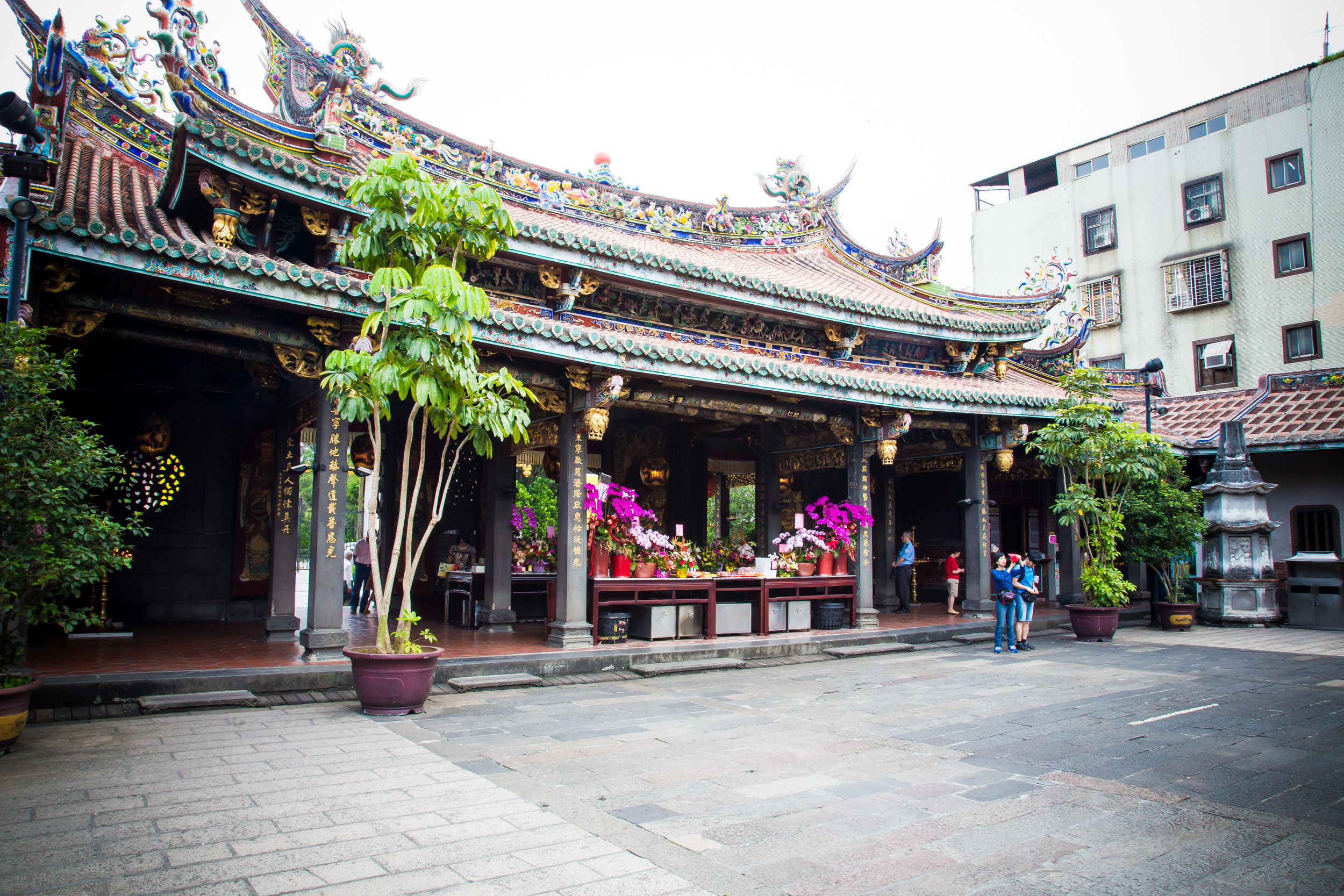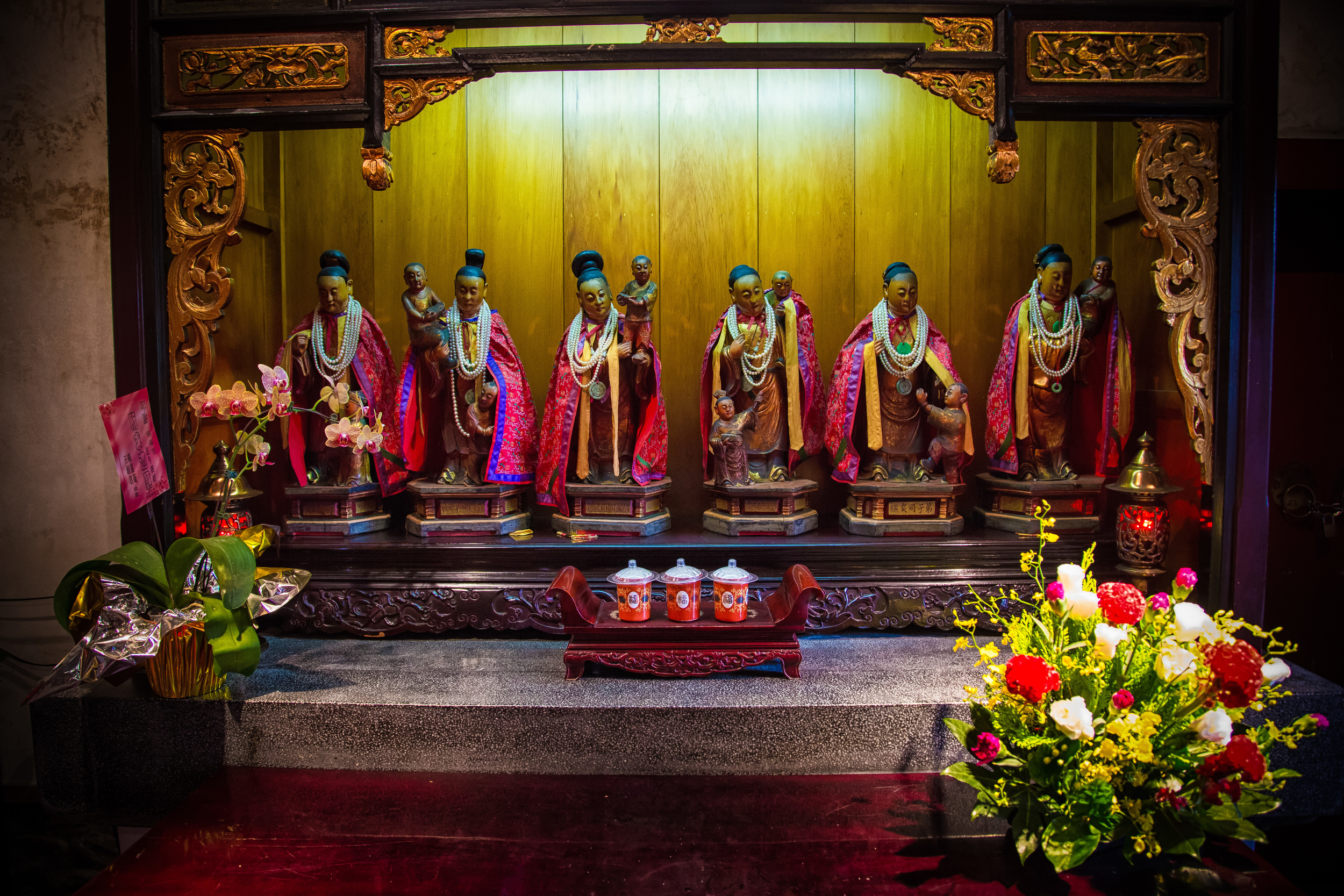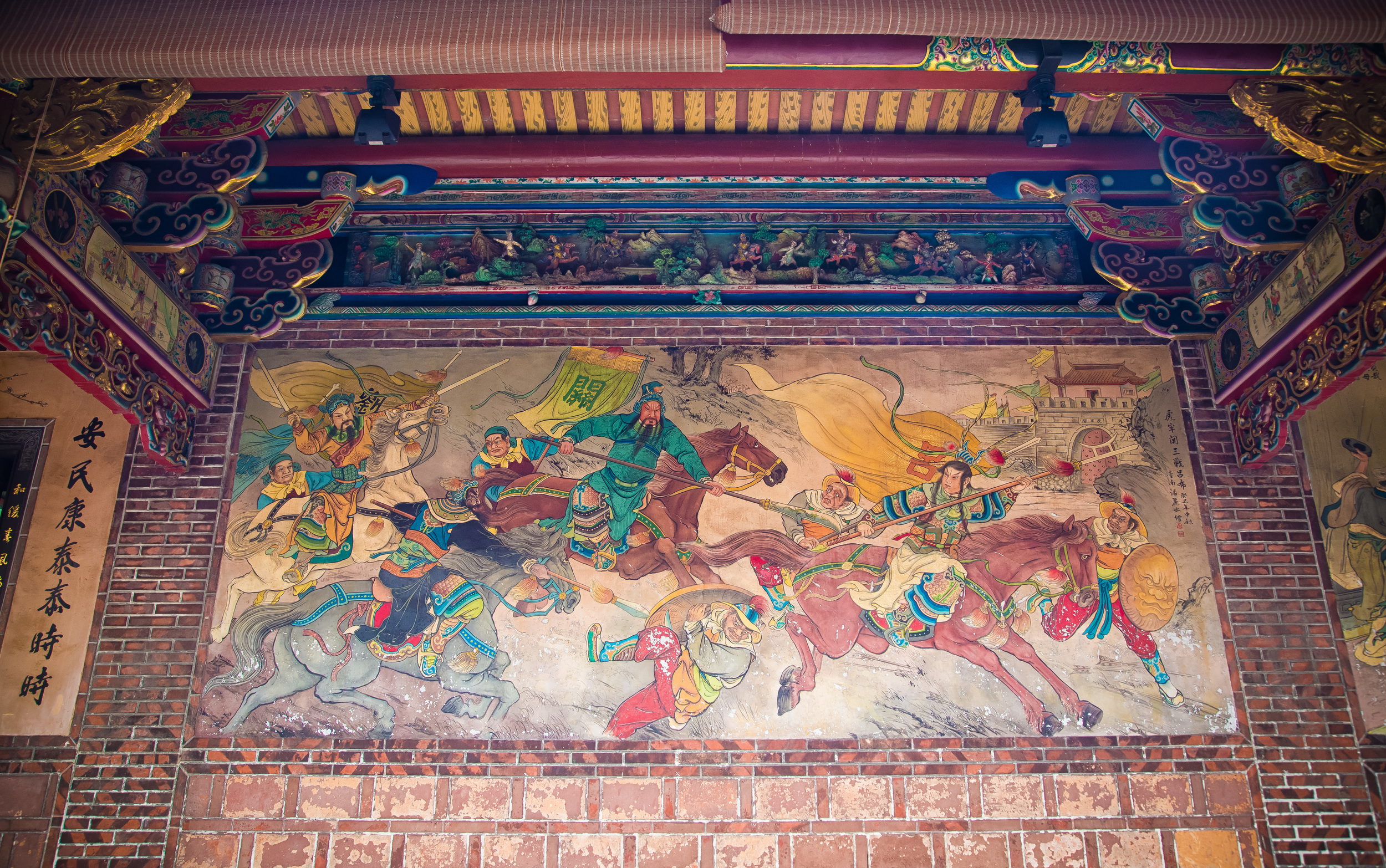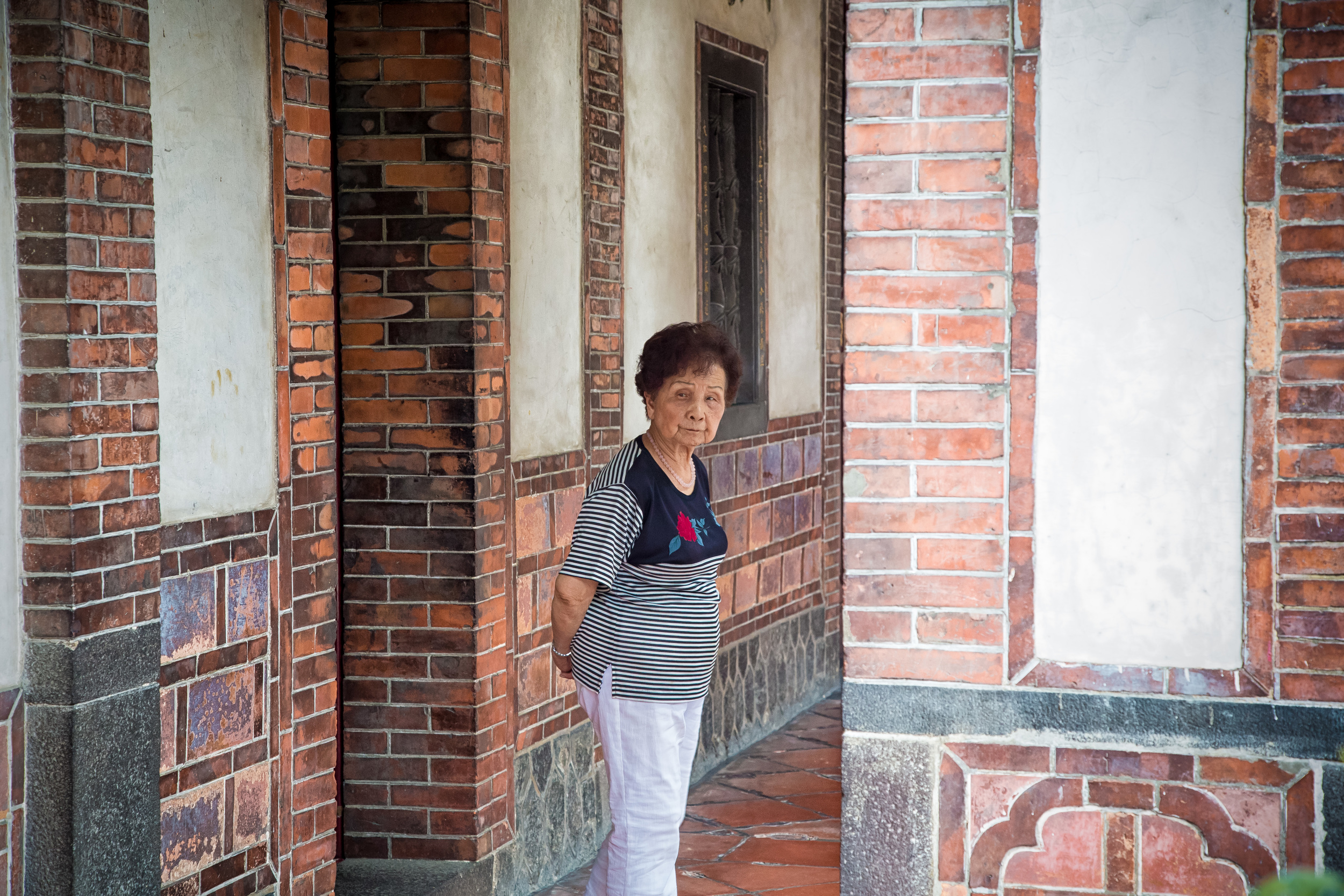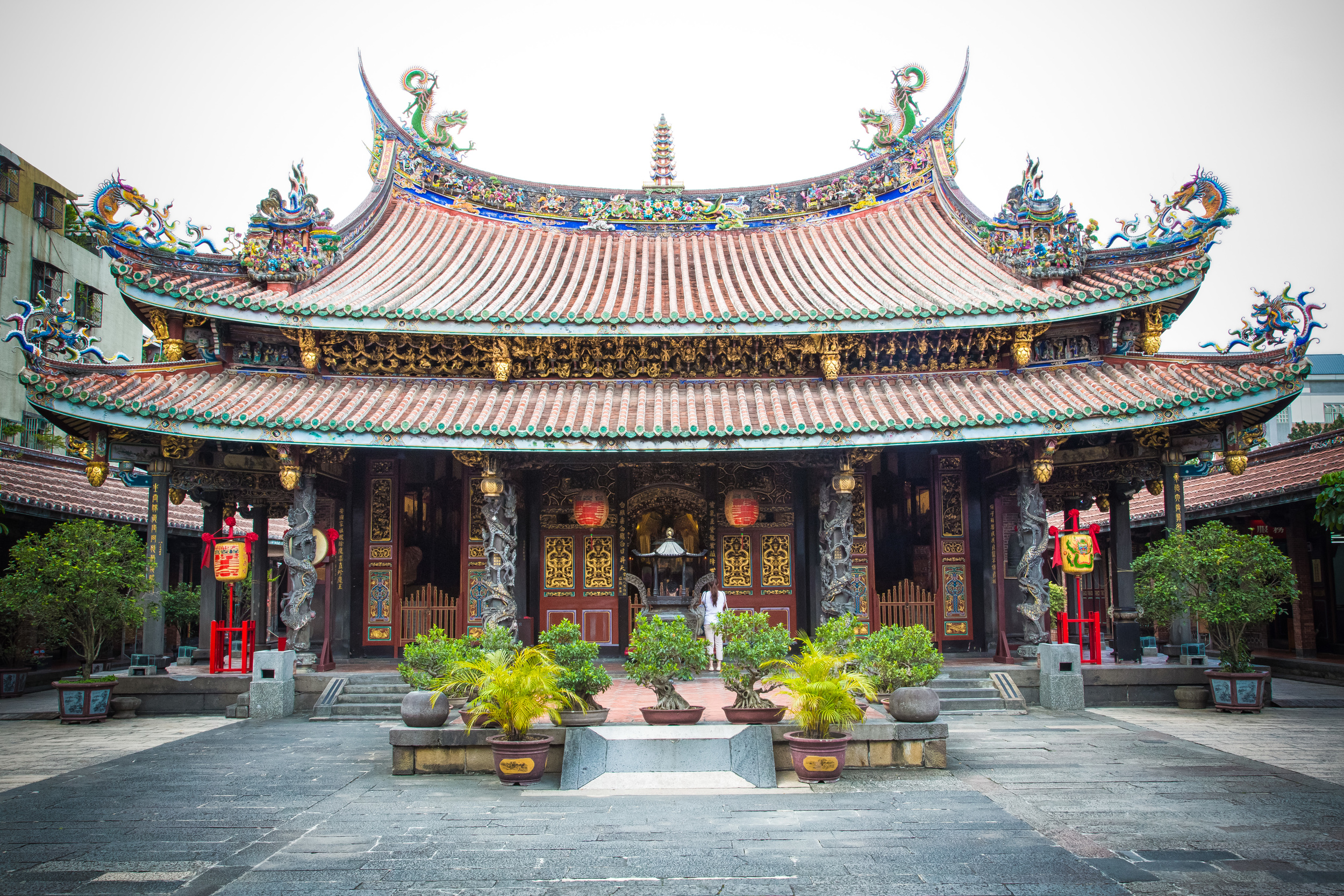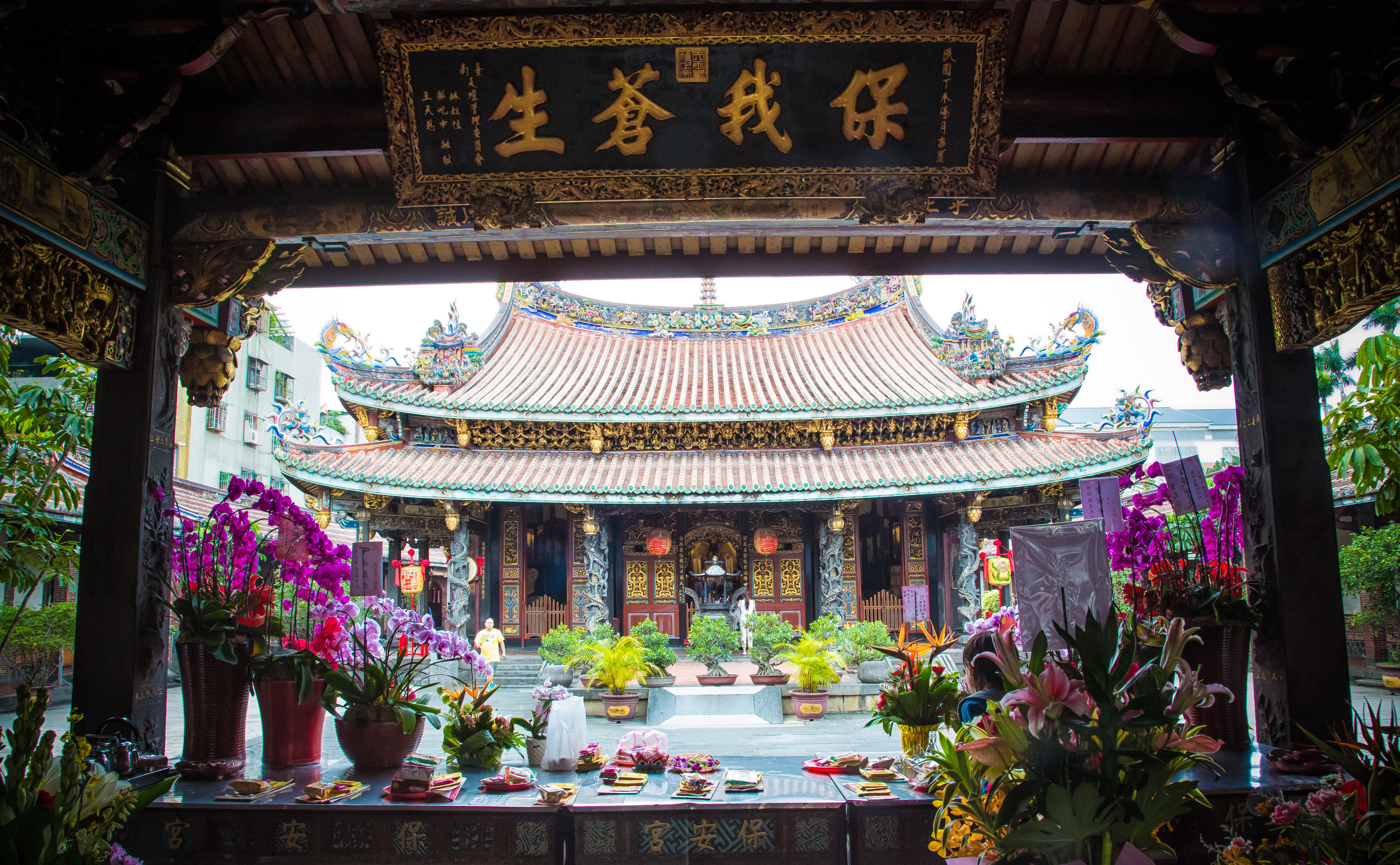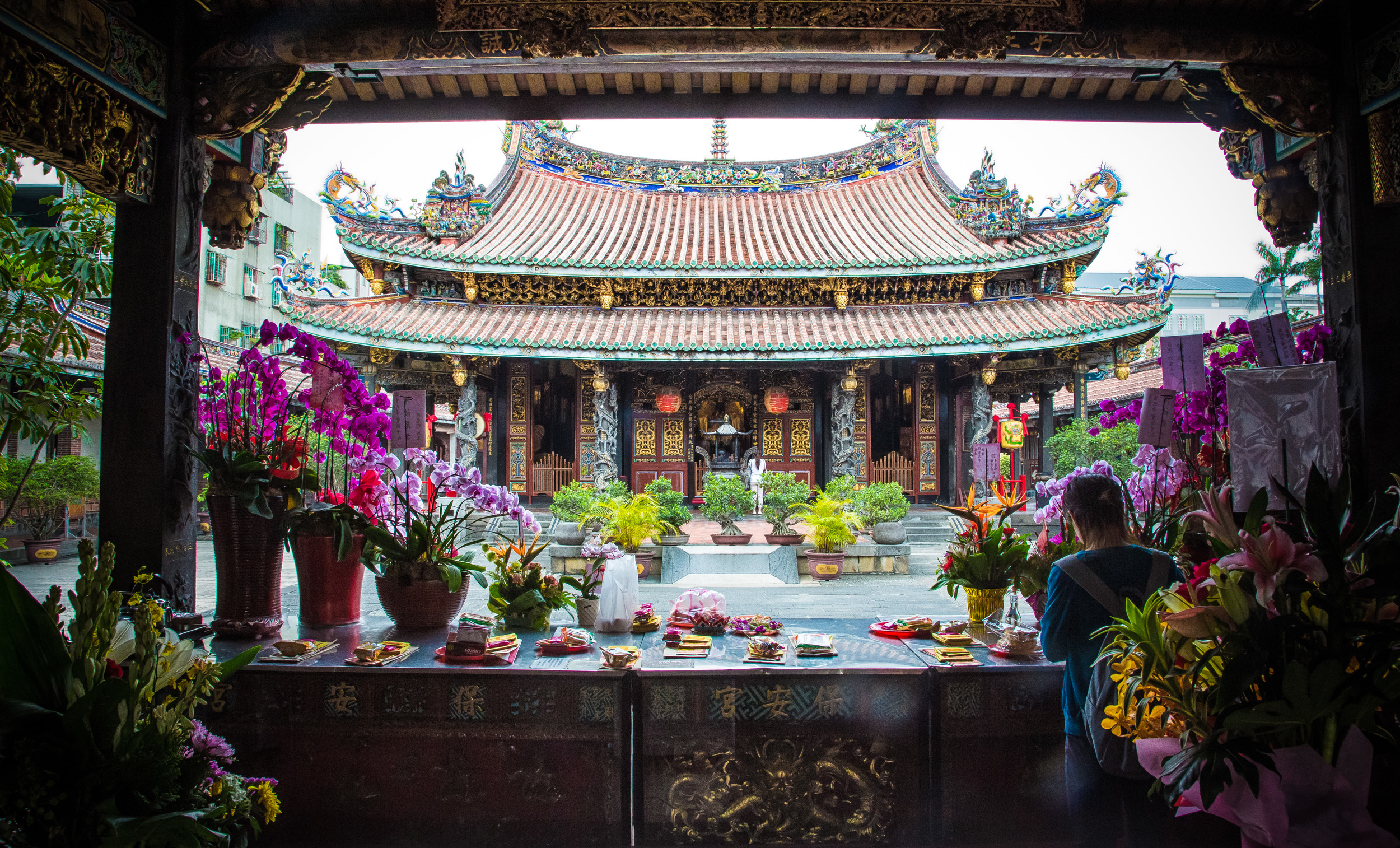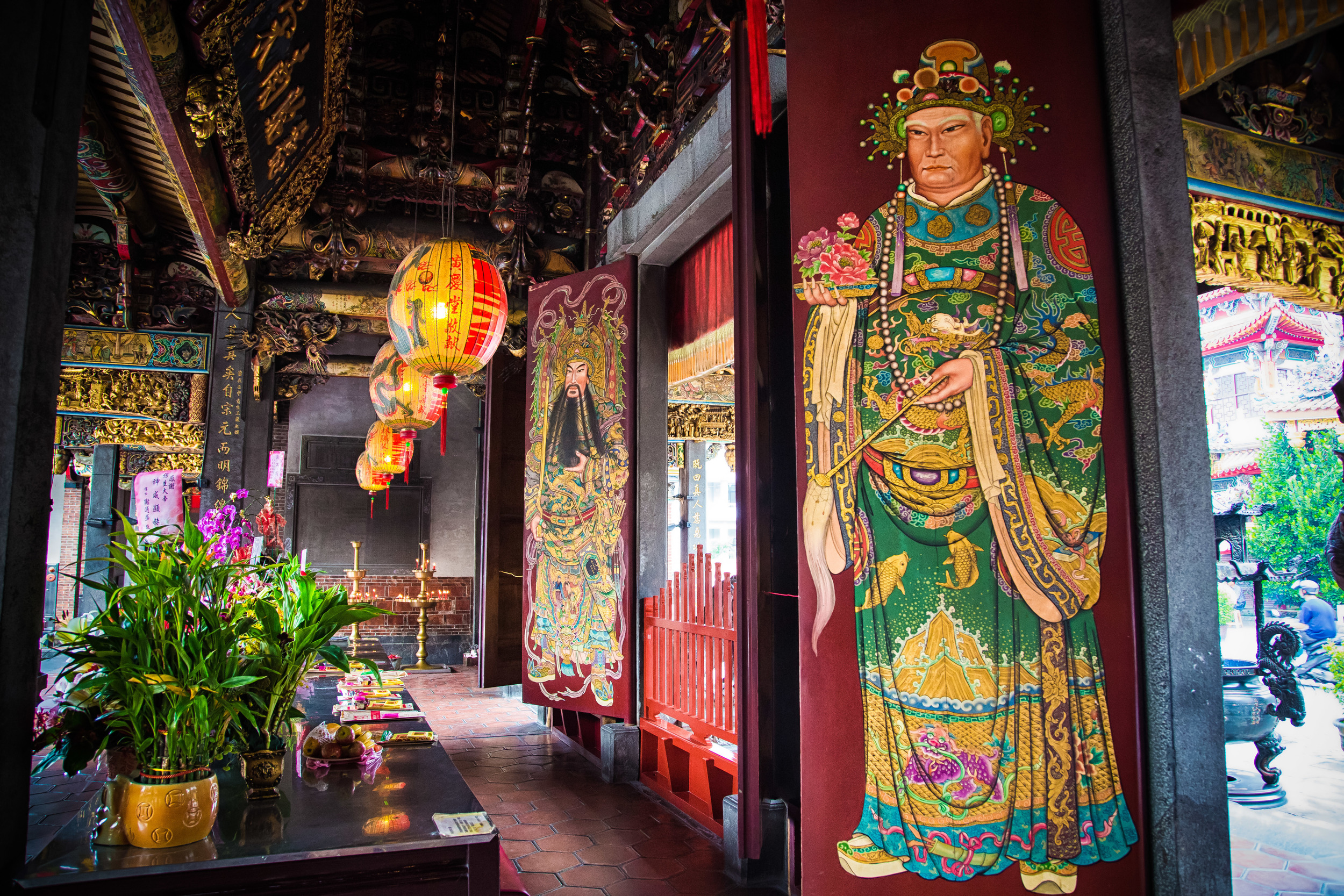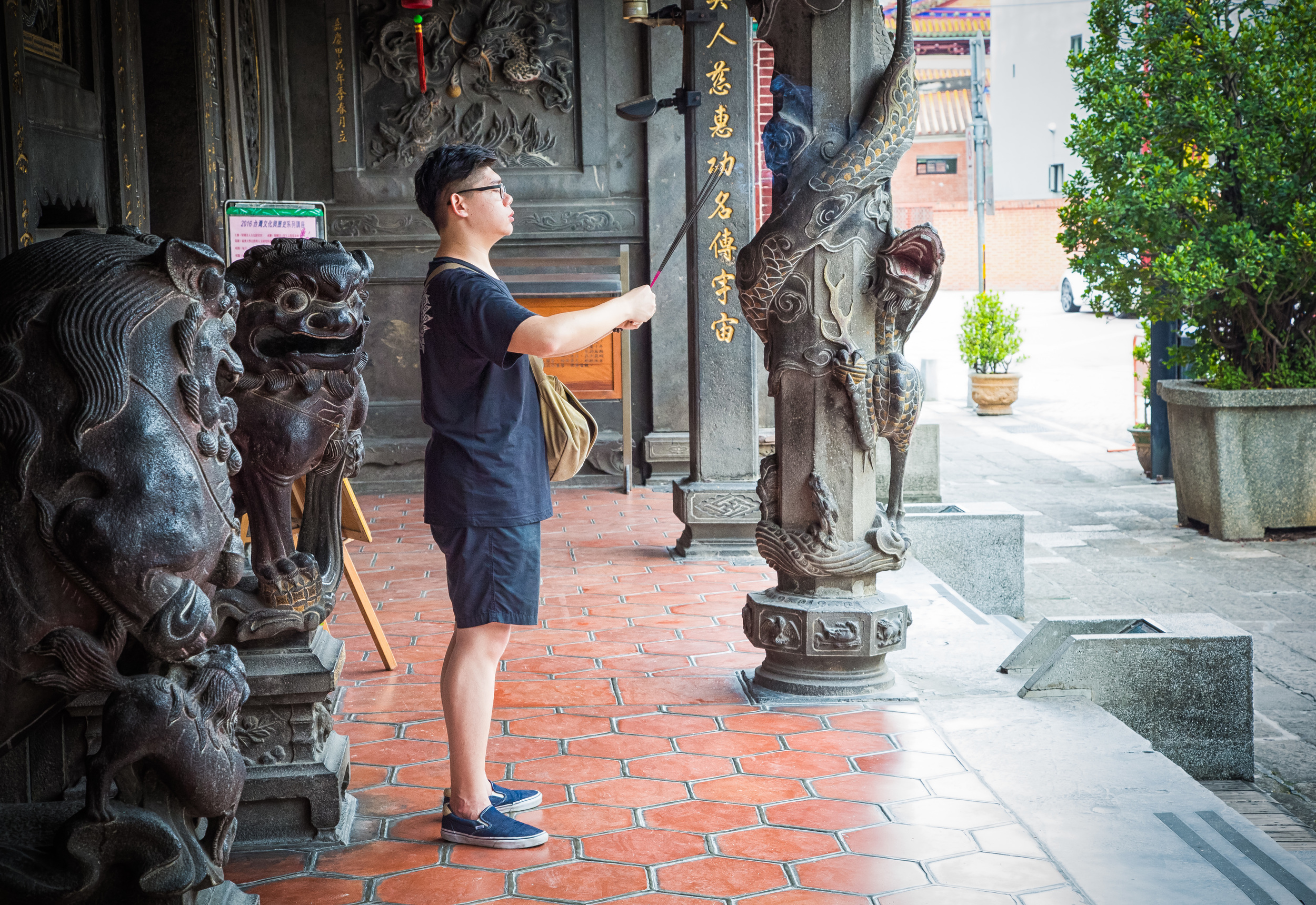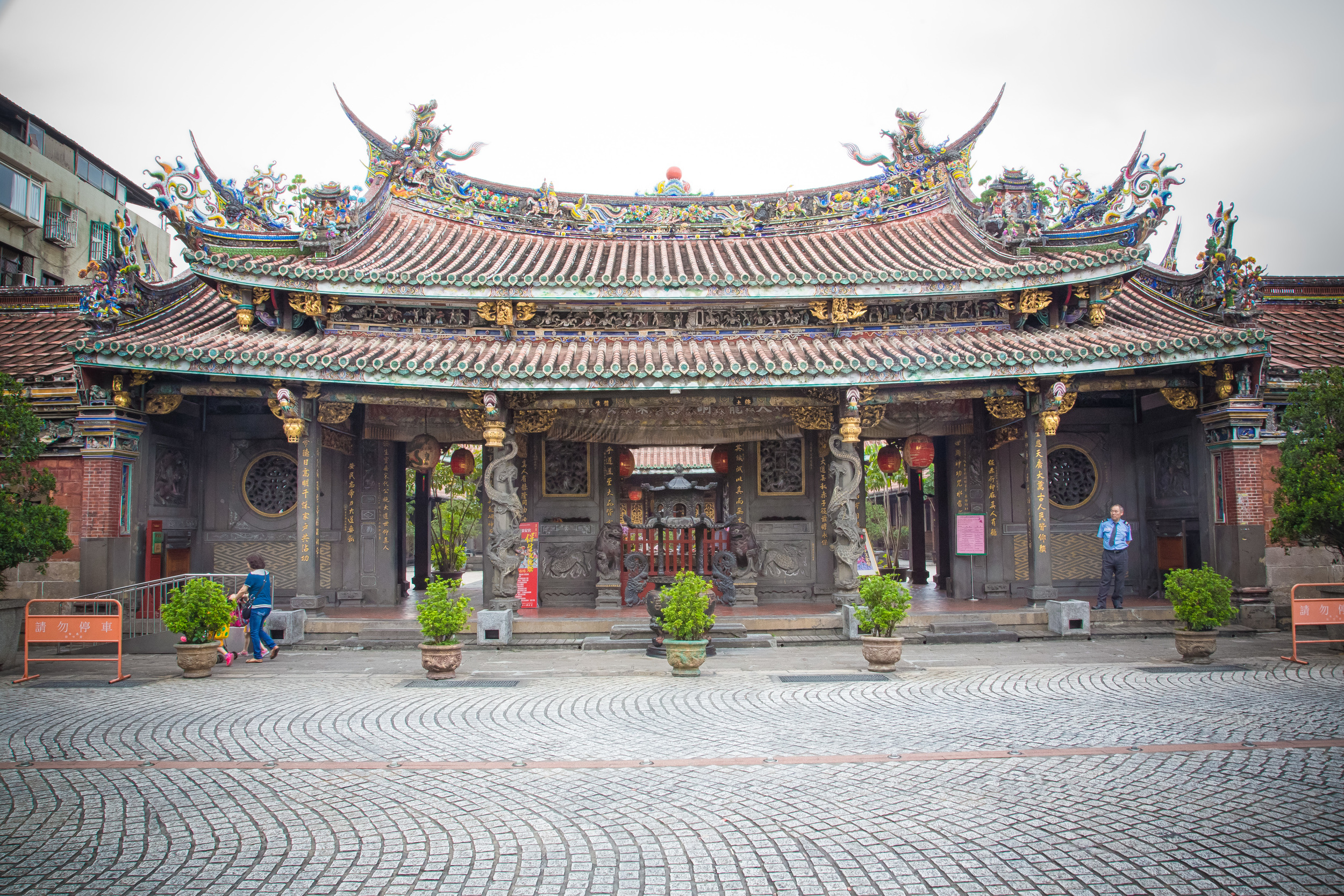While you’ll find places of worship dedicated to so-called the “City God” all over Taiwan, the Hsinchu City God Temple (新竹都城隍廟) is regarded more or less as the king of them all.
Like Hsinchu itself, the temple has a long history and over the years it has assumed the role of ‘spiritual headquarters’ for the other ninety-five temples dedicated to the deity throughout the country.
The City God, also known as Cheng Huang Ye (城隍爺) is an interesting figure in Chinese Folk Religion and is an important god in the hierarchy of deities within the religion - especially here in Taiwan.
Literally the “Lord of Walls and Moats”, the City God performs the role of a spiritual magistrate and acts as a medium between the real-world and the ‘otherworldly’ bureaucracy.
This is something that will become much more obvious as you read on.
While it would be easy to liken the City God’s role to a modern-day mayor of a city, his role is a much more traditional one that is similar to what a bureaucrat in ancient China would have performed.
Not only is he responsible for order and stability within his realm, it’s also important for him to ensure that justice be swiftly carried out while also offering protection and material benefits to his constituents.
Link: City God (Wiki) | Cheng Huang (Britannica)
To carry out his duties, the City God comes complete with a court, divine officials, judges, generals soldiers to help ensure that his will is done.
If you have a keen eye and know a bit about this stuff, you’ll notice that quite a few of these figures are common in Taiwan’s temples and aren’t always exclusive to the City God.
Most notably, General Fan and General Hsieh (范謝將軍), General Han and General Lu (韓盧將軍), Ox-Head and Horse-Face Generals (牛馬將軍), the Eight Infernal Generals (八家將) and the Lock and Cangue Generals (枷鎖將軍), among others.
Link: Chenghuang—City God, Judge, and Underworld Official (Digital Taiwan)
While it may seem cliche to say this, the importance of the City God and his court is Confucian in nature and his worship is representative of ancient Chinese philosophical notions of political ideology and urban development.
To explain, worship of the City God is thought to have started sometime during the Ming Dynasty (1368-1644) in the early 14th Century. At that time, cities in China and other countries in the region were commonly walled-communities with large guarded gates. Coincidentally, the original urban design of Hsinchu itself was no different and you can still find one of the gates, Yingximen (竹塹城迎曦門), otherwise known as the East Gate, near the City God Temple.
The purpose of the gates was obviously for practical security purposes, but also demarcated the physical perimeter of towns and cities in addition to the spiritual area, which the City God (as well as his human counterparts) were expected to reign over.
Each of the ninety-five City God temples in Taiwan “presides” over an administrative region of the country, which could be anything from a small village, town, city, county or off-shore island.
Interestingly, a few centuries ago, these temples would have been (somewhat) off-limits to the general public with only local government officials allowed to visit. Today though, things are quite different and people all over Taiwan visit regularly to pray and make offerings to the City God and those in his court.
They also come to pay respects to his wife, who is well known for her exceptional match-making skills!
To that effect, when you enter a City God temple, the design is supposed to mimic that of what you’d find in a traditional Chinese-style palace with the City God sitting on a throne and each of the members of the court having their own office (shrine) to perform their duties.
When interpreting City God worship, its important to take into consideration that traditional and contemporary folk religion in Taiwan tend to differ slightly. For many of the reasons listed above, the City God has performed a divine role as a unifying figure for a specific geographic location, kind of like a sports team does for a lot of people.
His worship has also helped to enforce the notion of bureaucratic hierarchy and devotion to ones community and country. More importantly though, of the long list of deities from Taoism and Chinese Folk Religion, he has always considered to be the most loyal and just of them all and is meant to serve as a role model for any who take up public office.
All of this tends to be reinforced by the company that he keeps as many of the more well-known members of his court are known for their adherence to personal sacrifice, loyalty, justice and honour.
The modern approach to the City God in Taiwan though is one that takes into account many of the attributes listed above but goes even further into making the City God somewhat of a divine superhero who is capable of performing miracles and assisting local people with whatever problems life might throw at them.
Essentially the City God has become a multi-purpose deity who not only provides peace and protection to his constituents, but is also the go-to deity for any problems that you might have. This is important because if you haven’t noticed already, Taiwanese pride themselves on convenience - so if you have a deity that is able to help solve any issue you may have, it’ll end up saving you some time.
So if for example you were a farmer with health problems whose crops were being stolen, instead of visiting the Land God (福德正神), the Baosheng Emperor (保生大帝) and the Lord of Grains (神農), you could just visit the City God.
Makes sense right?
It goes without saying that worship of Mazu (媽祖) and the Earth God are probably much more prevalent in contemporary life in Taiwan, but the City God is still one of the most important deities here and thus the festivals in his honour are some of the largest temple festivals on the yearly calendar and this one in Hsinchu is the largest!
Now that we have all of that out of the way. Let’s talk about the festival!
The schedule of interesting cultural and religious events during Taiwan’s annual month-long Ghost Month Festival is a long one, but one of the highlights is always the three-day long Hsinchu City God Inspection.
During these three days, the city comes alive with events that pretty much shut down the downtown of the city while gods parade through through the streets with a constant barrage of fireworks and fire-crackers.
The event starts on July 13th (of the Lunar Calendar) and lasts until the final night on July 15th when the City God leaves his temples and goes on an inspection tour of the city.
July 13th - Night Patrol (查夜暗訪,祈福平安)
July 15th - City God Inspection (城隍威巡,遶境賑孤)
A quick note:
This may confuse some people, but July 15th on the Lunar Calendar just so happens to be an important day within the schedule of events during Ghost Month (中元節) as it marks the middle of the month-long celebrations. On this day, all around Taiwan people place offerings outside their homes and businesses as a show of compassion for the ‘hungry ghosts’ (餓鬼), who are regarded as people who have died without a family to worship them.
While the ‘Pudu’ (中元普渡) celebrations take place all over Taiwan, as well as in Hsinchu, the City God Inspection is an event that can be considered to be “part” of the celebrations, but is something that is exclusive only to Hsinchu, which is a tradition in the city that goes back a few centuries.
For those of you who like myself have a difficult time keeping track of events on the Lunar Calendar, you should start preparing for this event sometime near the end of August or the beginning of September.
If you do have a hard time, I recommend bookmarking this website, which should help you keep track of what is happening at the different times of the year in Taiwan.
Link: Taiwan Religious Culture Map (台灣宗教文化地圖)
This event is similar to a lot of other temple festivals in Taiwan but more so comparable to what happens during the Qingshan King Inspection tour (青山靈安尊王) of Wanhua district in Taipei.
Although there are quite a few differences, the atmosphere is just as electric and the parade that ensues throughout the city is one of those Taiwanese cultural events that should definitely be seen at least once!
On the first day of the festival, several ceremonies take place before the son of the City God leaves the temple in his palanquin with torch-carrying believers following through the route that will be taken two days later.
The reason why it’s important that the son checks out the route beforehand is that it is especially important during Ghost Month that the route is ‘safe’ for the City God to leave his throne-room.
To ensure that no angry ghosts are lurking around the route, the City God’s son is accompanied by members of the court as well as torch-carrying believers who parade through the streets on a “night patrol” (查夜暗訪) making lots of noise to announce their arrival and scare away anyone or anything that could cause a problem.
On July 15th, the day of the inspection, temples from throughout the country form a traditional parade and come to Hsinchu to pay respect to the City God. This parade is something that starts early in the afternoon and goes on well into the night.
If you’re reading this and wondering why City God statues from temples around the country come to pay respect to the Hsinchu City God, you’re probably not alone.
They are after-all all statues of the same god aren’t they?
To explain it simply, there is a hierarchy of importance when it comes to these statues - The Hsinchu City God is (unofficially) considered to be the emperor of them all and the statues from minor temples are thought to derive their spiritual power from it, which is why they have to visit and pay their respect.
As I mentioned above, when a major deity like the City God comes out of their temple for an inspection, there will always be an entourage traveling with them. In this case, there is the "night patrol" on the first night of the event that scares away any evil or ghosts which may be hiding in the area. Then when the god starts its inspection, another large parade is formed to help ensure security.
The entourage is probably my favourite part of these inspection tours as they usually include the Eight Generals (八家將), the First Officers (官將首) and the Infernal Generals (大仙尪仔) in addition to others dressed up in robes beating gongs, lighting fire crackers and generally causing about as much noise pollution as possible.
Link: Eight Generals (Wiki) | The Eight Generals and the Neimen Songjiang Battle Ritual (TaiwanEverything)
The night of the inspection is considered to be the liveliest time of the year in Hsinchu City and attracts thousands of spectators and believers from all over the country.
Hsinchu has changed a lot since the early days of this festival and as it has developed into one of Taiwan’s most modern cities, the annual City God Inspection has likewise followed suit.
These days you’ll find a masterful medley of modernity and tradition on display at the event which helps make the event accessible to everyone with the usage of large screens, live feeds and the internet.
To that effect, this year a large covered stage was set up in the public square next to the City God Temple where the god accepted visitors from various temples around the country. This allowed for a smooth flow of pedestrian traffic and saved quite a bit of time. It was also helpful for those who wanted to take part in the event as the space was large enough for people to line the streets.
Likewise, there was a live stream of the event on large screens set up throughout the city as well as on the internet.
One of the most interesting modern additions was the usage of an electric fire-cracker box that simulates the sound of firecrackers, but doesn’t pollute the air in the same way actual firecrackers do - something that I hope catches on with temples all over the country.
That being said, the downtown core of Hsinchu is notorious for its terrible traffic and even though traffic control measures were put into place in the area where the inspection was taking place, it was still kind of a mess with traffic backed up for quite a long time while various portions of the parade were visiting other local temples.
If you’ve read this far, I think I should probably mention that this is a much-needed update to the original City God Inspection post that I made several years ago. This time around I’ve added more in-depth information about the festival as well as some new photos.
When I first attended the City God Inspection several years ago, I did so with my good friend and fellow blogger Alexander Synaptic (website / instagram) who did some visual story-telling through his social media accounts while I took photos. This time around, when I arrived in Hsinchu, Alexander had already been there for a few days touring Hsinchu and documenting the early stages of the festival. It was great to once again walk around and enjoy ourselves during this important cultural event.
Before we met up though, I spent a few hours on the coast of Hsinchu taking photos of the Xiangshan Wetlands and the Xiangshan Train Station for some upcoming articles.
When I arrived in the city, I quickly made my way to the parade route and started taking photos of some of the early processions around town. When I came across a group of Eight Generals (八家將) from Tainan’s Xianwei Hall (府城玄威堂), who came up to Hsinchu for the day to perform and pay their respects to the City God, I spent quite a bit of time following them and taking portraits.
As time goes by, I hope to be able to continue attending this festival and likewise posting future updates to this blog. If you have any questions, feel free to get in touch and I’ll try to help out. Likewise, some of the information about is open to interpretation. If you think I could have explained something better, don’t hesitate to let me know!





